LUXURY MARKET INSIGHTS
VANESSA HAMRICK REALTOR®
Coldwell Banker Premier Realty
702.787.6405
vanessa.hamrick@cbvegas.com
www.VanessaHamrick.com
My "no-nonsense" approach to real estate, coupled with my high standards, dedication, personalized level of service, and commitment to my clients' needs, set me apart from all other agents. Earning the prestigious "International President Circle for Coldwell Banker" recognition for 2019-2021, I am in the top 10% of all active Real Estate Agents in my marketplace with regard to production and customer service satisfaction.



My extensive career in the banking industry with Bank of America in the United States and with the Royal Bank of Canada, Canadian Imperial Bank of Commerce, and the Scotia Bank as a fully licensed Mutual Funds Representative have given me a strong understanding of the financial services market.
Before embarking on my real estate career, I worked as a representative of the VIP Services Department for MGM Resorts and the prestigious Wynn Resort and Casino. Following these positions, I was appointed Vice President of Events for a local entertainment company in Las Vegas, responsible for procuring, producing, coordinating, and managing Las Vegas events. As a leader in each of my positions, I established relationships with Las Vegas's elite and some of the world's most renowned corporate leaders and directors.
My finance, customer service, and marketing background, combined with my proven success in the luxury real estate market, provides me with the perfect set of tools to help you sell your home as quickly and efficiently as possible for the best possible price! Who you work with matters!
Welcome to THE REPORT 2023
Luxury Market Insights
There are more than a few words that could sum up our current luxury residential landscape: resiliency, adaptability, contradiction, transition, adjustment, resetting. Declarations of 2023 as a year of correction by some in the media may prove to be the most apt description of where the real estate market sits presently. But only time will tell if this title holds against the tides of reality. Expectations have shifted more recently, with all eyes on the spring to post a strong showing for luxury real estate after a momentary pause in 2022.
Paradoxes abound in this market. Conditions are improving for buyers this year, but it’s not a buyer’s market yet –at least not everywhere. Median prices for luxury single-family homes are up in some places, like Seattle, and trending down in others, like in Phoenix. Inventory is up overall, but new inventory continues to lag. Even on the wealth side, the metrics don’t paint a consistent picture. These contradictions have sowed confusion and allowed housing market misconceptions to take root, which is something The Report 2023 seeks to dispel.
This year’s report gathered intelligence from The Institute of Luxury Home Marketing, Wealth-X, Credit Suisse, the National Association of Realtors, a Censuswide/Coldwell Banker Global Luxury Survey, and others. Over 600 Coldwell Banker Global Luxury Property Specialists were surveyed for their outlook on the unique buying, selling, and market trends of high-end real estate.
I hope you will find this information invaluable.
Vanessa Hamrick
6
in Review 2022
56 New Narratives for 2023
78 Global Luxury Outlook 2023
Luxury Outlook 2023
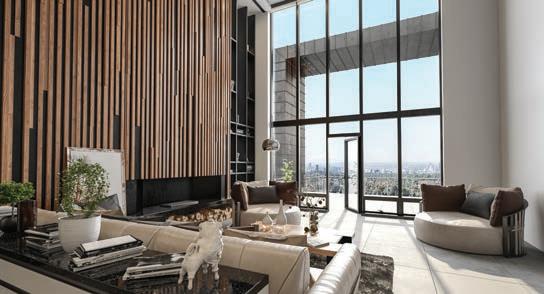
108 Methodology and Resources
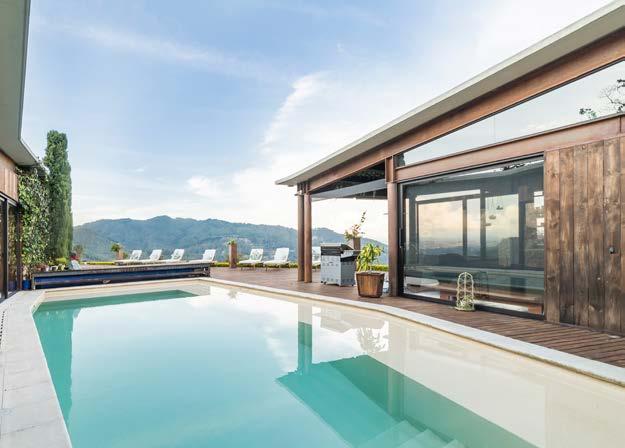
1. A HOUSING MARKET CORRECTION APPEARS TO BE UNDERWAY
After three years and 40% price increases in the luxury home sector, uncertainty took root after the Federal Reserve started hiking interest rates in March 2022 to curb inflation. The market appears to now be normalizing to traditional levels.
2. SEASONALITY CAME BACK IN 2022, BUT WITH A TWIST
Inventory, sales, and prices all rose in the second quarter, only to stall in the third and fourth quarters, as the market reacted to outside influences. Expectations are that the spring market will return in 2023.
3. BEHAVIORAL GAPS BETWEEN WEALTH DEMOGRAPHICS WIDEN
High-Net-Worth (HNW) individuals are expected to shift focus to conscious spending and future-proofing, while Ultra-High-Net-Worth (UHNW) individuals will continue to live for the moment and prioritize personal enjoyment.
4. AGENT OUTLOOK REMAINS UPBEAT
Over half of Luxury Property Specialists surveyed said that they expect 2023 luxury home prices to remain flat or up slightly from 2022. Over half said they expect demand to remain consistent throughout 2023, while nearly 30% said they thought demand could be stronger by the end of the year.
5. WHAT DEFINES A DREAM HOME IN 2023
Most Luxury Property Specialists said that indoor-outdoor living spaces, a chef’s kitchen with up-to-date appliances, and a home with a breathtaking view are their clients’ top must-have home amenities. Meanwhile, 40% said that their clients define a dream home by its views and 36% said quality of construction or materials.
6. SECONDARY HOMES BECOME MAINSTAYS
The percentage of U.S.-based individuals with a net worth of $5 million+ who own two or more properties increased from 70% in 2021 to 79% in 2022, per Wealth-X. Among those, over 16% of their wealth is allocated toward real estate and other luxury assets.
7. TOP SPRING BUYING AND SELLING OPPORTUNITIES
An analysis of 125 U.S. metropolitan areas revealed the top 10 opportunity markets for buyers and sellers this spring. St. Louis led the list for sellers, while Marco Island, Florida, has grown friendlier to buyers.
8. THE TOP 20% CONTINUE TO LEAD LUXURY
An analysis of 10 prime U.S. markets from New York to Los Angeles showed that the wealthiest spenders carry an outsized influence in the high-end residential sector.
9. WEALTH CENTERS SHIFT AROUND WORLDWIDE
New York is still the No. 1 city globally for HNW primary residents and secondary-home owners, but Singapore jumped into the top 10 in 2022, taking the No. 4 and No. 7 positions, respectively. Now that China has lifted its COVID-19 travel restrictions, experts also predict increased movement from this part of the world.
10. SECONDARY-HOME OWNERSHIP MAKES A GLOBAL COMEBACK
Borders have opened up, and with it has come increased global travel and a growing affinity for property ownership in foreign countries among HNW individuals. Their reasons for looking beyond their home country range from economic to political and financial, but their penchant for exclusivity and adventure plays a key role.
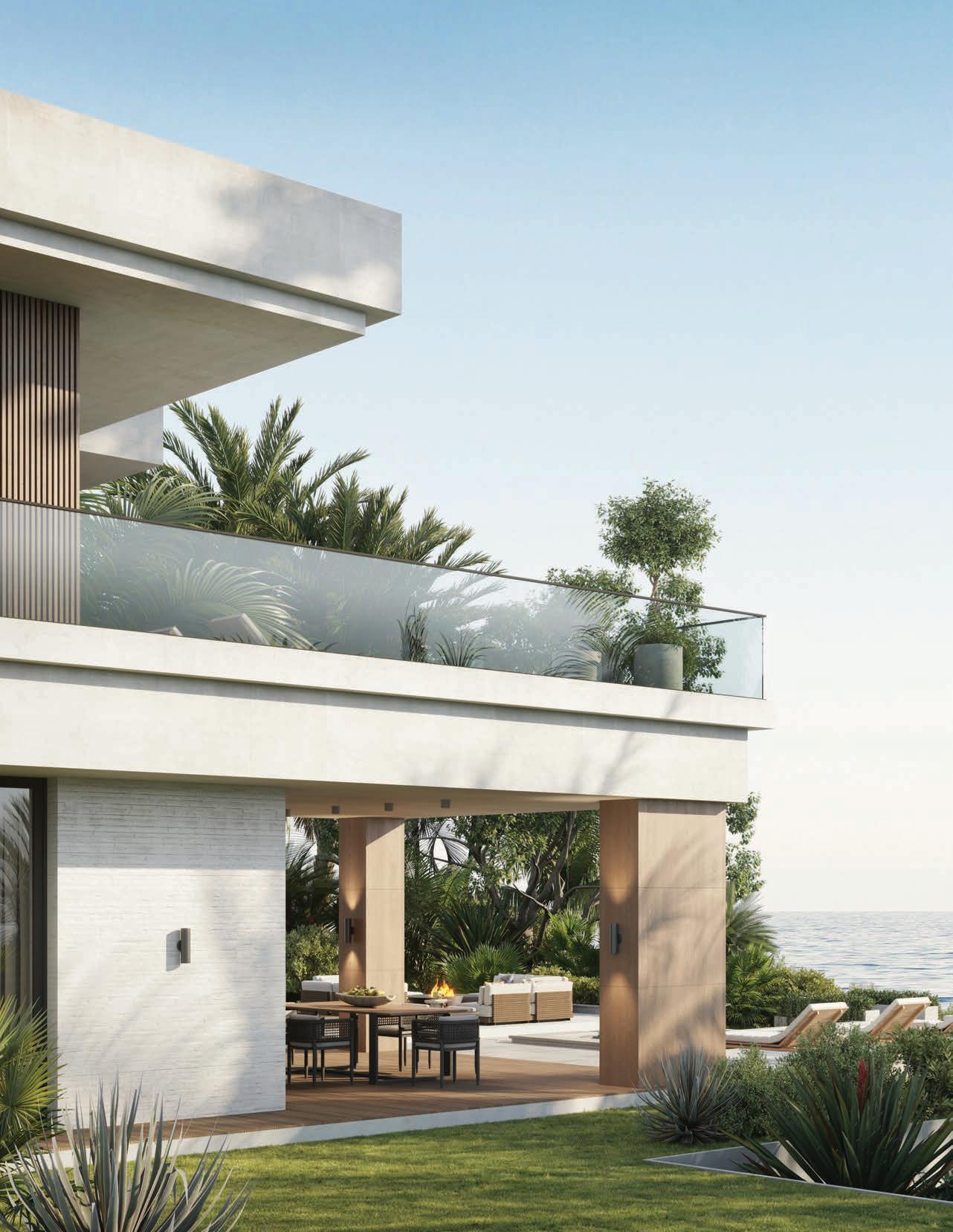
Luxury IN REVIEW

The luxury housing market appears to be adjusting after experiencing rapid growth through 2020 and 2021.
The 2022 market revealed challenges that had experts contradicting each other in their predictions and assumptions. Especially confounding to them was the fact that many luxury markets still showed favorable conditions to sellers at the end of the year.
The Four FACES OF 2022
The best way to understand the 2022 luxury residential market is to look at it from a quarterly point of view. Each quarter demonstrated very different market characteristics.
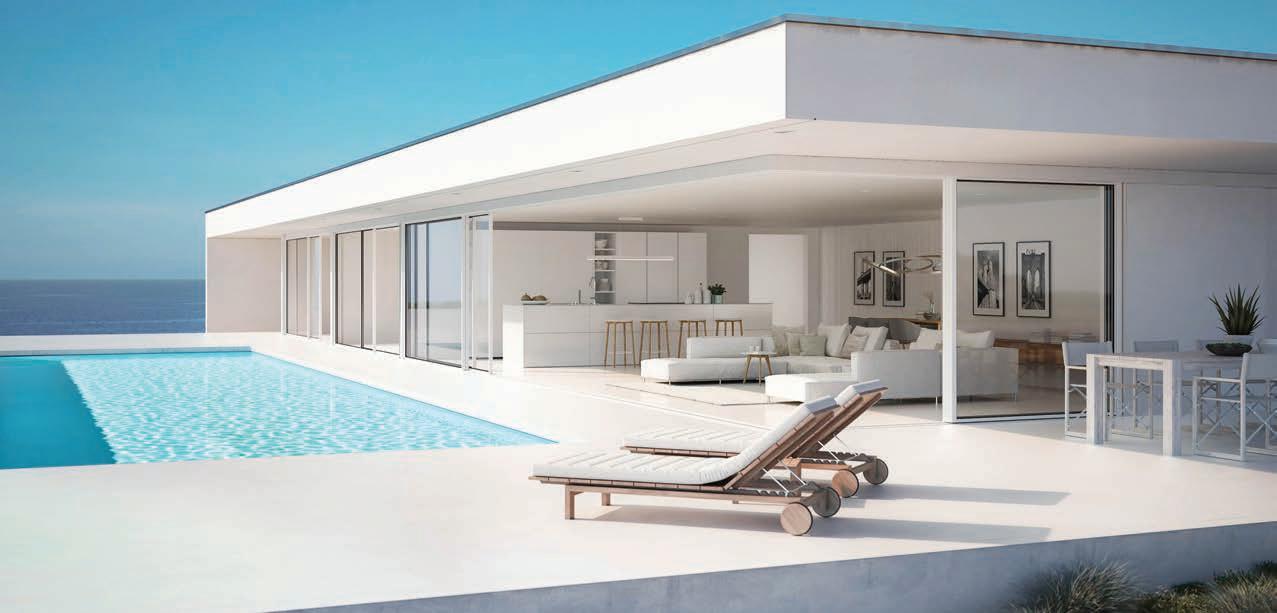
FIRST QUARTER
The first quarter of 2022 started strong, continuing the pace set in 2021. Escalating demand and some of the lowest inventory on record brought home prices to new heights. Two unique fixtures of the 2021 market – multiple offers and homes being sold over asking price – remained
in the first quarter. A severe lack of inventory was the main reason why the number of sales was not higher.
Prices continued their upward streak, rising by 5.9% for single-family homes and 20% for attached properties in the first quarter of 2022 compared to the last quarter of 2021.
Meanwhile, inventory levels dropped 27.1% and 27.8% for the same period, respectively. Somewhat atypical was the robust buyer demand exhibited during the first quarter of 2022, since the first part of the year is traditionally considered a slower season for real estate (except for snowbird markets). If new properties came on the market, they were snatched up quickly.
QUARTER 1 MARKET STATISTICS
Median Sold Price
Average Monthly New Inventory
Average Monthly Inventory Sold Homes
$1,594,500 5,210 14,236 20,393
$1,100,000 1,976 5,292 7,278
SECOND QUARTER
The second quarter began to signal change following the Federal Reserve’s March 2022 0.25% interest rate hike –the first increase since December 2018. The S&P 500 decreased by 16.1% in the second quarter1 – the highest quarterly decline since the first quarter of 2020. Concerns over inflation and the impact of the Ukraine war also started to breathe an air of uncertainty into the high-end property market.
Adversely, luxury home prices continued to rise and affluent buyers finally began to feel the pinch of higher interest rates.
3,008
7,273
10,096
Newfound buyer hesitancy coincided with the typical spring uptick of new listings, producing the first notable increase in luxury home inventory levels since September 2019. Inventory levels rose by 69.1% for single-family homes and 35.4% for attached homes from the first and second quarters – faster than most industry experts’ expectations. New inventory also increased by 108.6% for single-family homes and 52.2% for attached homes. With this surge of new properties hitting the market, buyers were suddenly presented with more options than they had in the last two years. The number of sales promptly followed suit, increasing 67.8% for single-family homes and 38.7% for attached homes.

QUARTER 3 MARKET STATISTICS
THIRD QUARTER
A notable downshift in demand for luxury properties occurred in the third quarter as hesitancy took root and affluent consumers fully absorbed the shock of interest rate hikes, stock market declines, and inflation. Additionally, July and August are typically slower months for property sales.
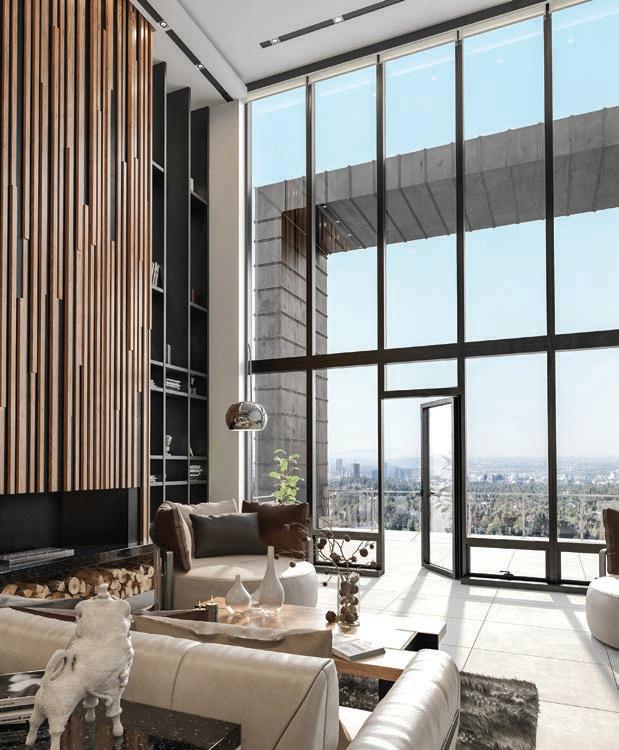
That being said, higher interest rates most likely have had the greatest impact on the demand. It meant that luxury sellers would have to trade in a lower interest rate for a significantly higher one as mortgage rates rose to 6% in September, which likely led many of them to simply hold off on listing their homes if they didn’t need to sell.
This would account for why new inventory levels declined from the second quarter to the third quarter. Meanwhile, overall inventory levels increased as a result of older listings remaining on the market longer. This is seasonally unusual for September, which typically sees an uptick in sales activity.
“ NEW INVENTORY LEVELS DECLINED FROM THE SECOND QUARTER TO THE THIRD QUARTER.”
FOURTH QUARTER
The final quarter of 2022 may be remembered for being one of the most contradictory three-month periods in luxury real estate. By December, the majority of luxury property markets across the U.S. still exhibited conditions more favorable to sellers than to buyers. Prices had not decreased as much as industry analysts predicted in June and July. Yet the number of sales continued to fall.
There are several reasons for these anomalies. The lack of new inventory entering the market continued to limit highnet-worth (HNW) buyers’ choices in desirable locations and therefore the number of sold homes. Furthermore, sellers and buyers could not align expectations on price, causing listings to sit on the market longer.
Inconsistency ruled across locations and markets. While some sellers might have lowered their prices in certain overheated markets, other traditional luxury markets did not see price reductions at all if they were attracting international buyers or the work-from-home crowd.
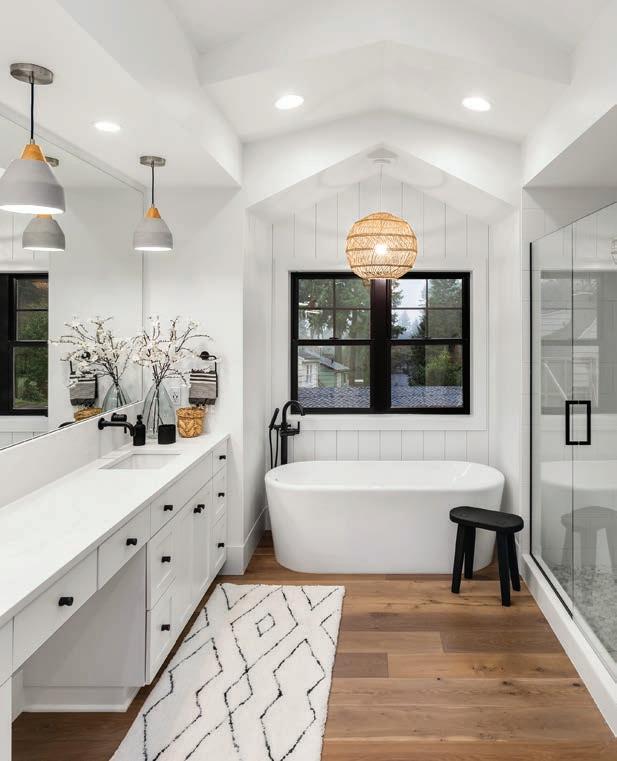
At the end of 2022, median luxury single-family home prices across 125 U.S. markets slipped only slightly from the second quarter peak but remained flat compared to the start of the year. There are a few reasons thought to be responsible for this decline. Affluent buyers, crunched by higher interest rates, sought smaller, lower-priced homes or paused their purchase plans. Others began to turn their
gaze toward second homes and investment properties, which are typically lower-priced.
Time will tell if this modest price decline is a trend that will carry over into 2023, or if the general property market will continue its contradictory reign.
4,912
Changing Market AND MINDSETS
Gradually, the 2022 market appeared to be resetting to pre-pandemic conditions.
• Luxury properties were taking longer to sell.
• Buyers didn’t have to compete with as many multiple offers or feel pressure to offer over-asking price without contingencies.
• Major metropolitan areas were once again in demand.
• Condos and homes with smaller footprints became “smart buys.”
• As brick-and-mortar luxury retail, hotels, and travel roared back to life, people’s lives took them outside of the very homes they so desperately sought in 2020 and 2021.

BACK TO THE BOTTOM LINE
The most noticeable market changes were slowing sales and flat prices year-to-year – but more subtly, consumer mindsets shifted. During 2020 and 2021, people were more focused on purchasing properties that addressed shortterm lifestyle needs during the pandemic – i.e., more space, larger backyards, two offices, playrooms for the kids, etc.
Money was a distant concern for most affluent buyers at the time, especially as their savings, equity and investment portfolios grew during the pandemic boom. Interest rates were at historic lows. Fast forward to 2022, and money became top of mind. Even the wealthiest of individuals were back taking a more cautious, long-term view of real estate, whether it was for financial security or good investment return.
HITTING THE PAUSE BUTTON
Uncertainty and hesitancy for both buyers and sellers were new features in the market, causing a stalemate. If HNW sellers didn’t need to sell, they simply refrained from listing their properties. Similarly, HNW buyers were less likely to settle for a property they didn’t want, especially since they suddenly had more buying power.
Location was no longer the main driver for many of them, who were still freed up by work-from-home arrangements. Amenity-filled, move-in-ready homes and locations that
offered their preferred lifestyle were now at the top of their list. Seeking a hedge against inflation, they also knew they could move to a lower tax state with better house affordability –an increasingly attractive alternative for the younger affluent generations of buyers who tended to be more price-sensitive and less enamored by prestige addresses.
If a seller did list their home and a buyer did put an offer on it, they may not have been able to align on price. Finding it difficult to shrug off the not-too-distant memory of 2021’s historic price appreciation, some sellers were not ready to negotiate on price. Meanwhile, buyers knew they had other options and could walk away from deals. The result was that fewer luxury buyers and sellers were making moves.
SEASONALITY IS BACK
This standoff between affluent buyers and sellers was already revealing itself in the market by the end of 2022 as inventory and sales levels dropped, and prices remained relatively stable. But it is also important to put these numbers into historical perspective. The holiday season is a slower time of year. If you compare sales in the final quarter of 2022 to the same periods in 2018 and 2019 – two “normal” years – the December numbers also dropped along with inventory.
This shows that what continued to hold back luxury property sales in the final quarter was the lack of new inventory.
Inventory Levels CREATE DRAMA
Without question, inventory has played the most significant role in the changes that occurred in 2022.
• If inventory increased, sales increased.
• If inventory dropped, sales dropped.
• The lack of new inventory coming onto the market continued to keep prices persistently high despite interest rates rising.
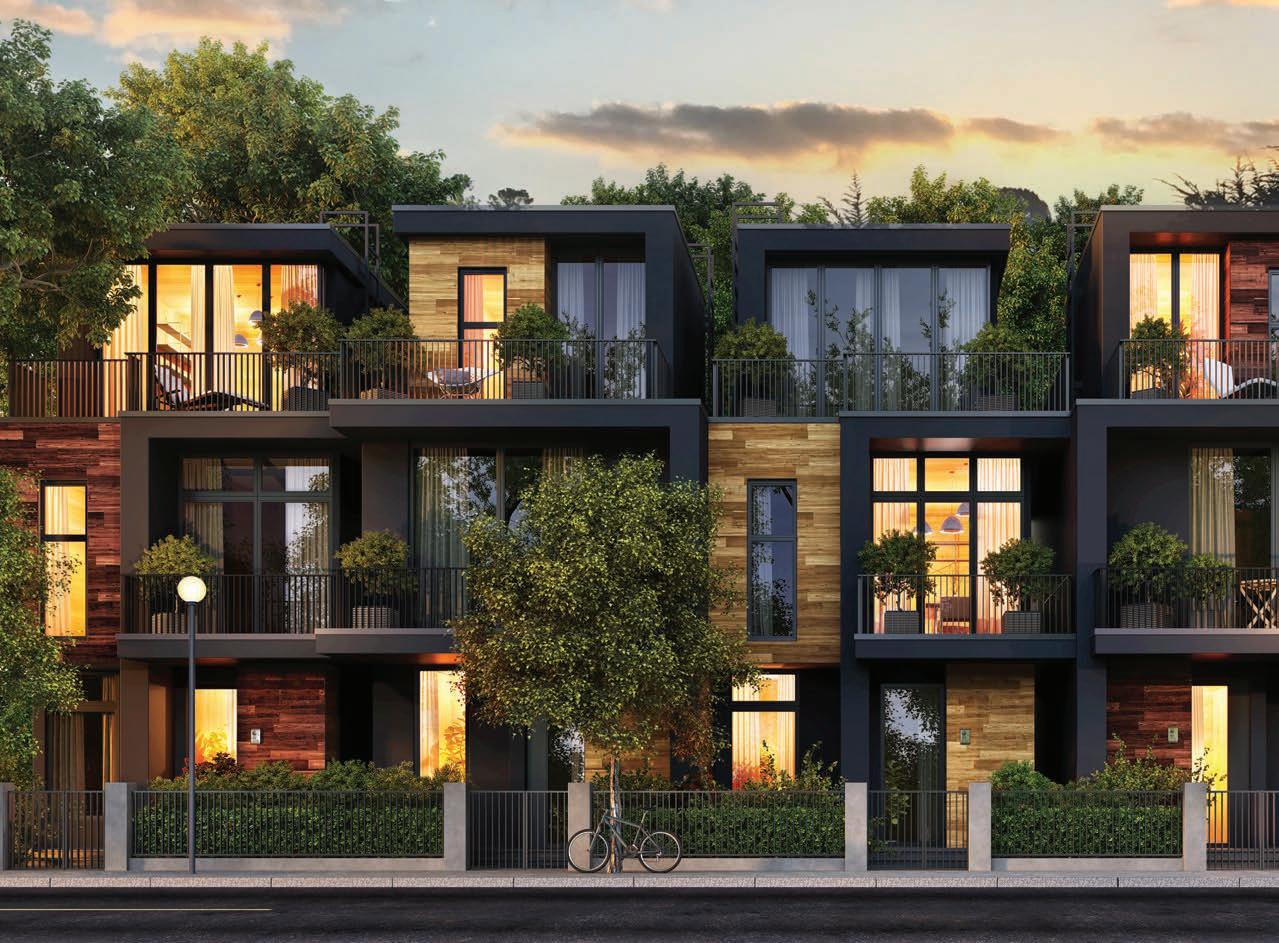
“ SELLERS PAUSED PLANS TO LIST NEW INVENTORY IN MANY MARKETS.”
BUYING FRENZY CONTINUES
In the first quarter, inventory levels were historically low, and equally for new inventory. This depletion was the continued result of the buying frenzy that began in 2020. Sellers were hesitant to list because they feared they might not find another property. New inventory that checked all of buyers’ boxes were selling 10 to 15% over asking price. During this time, stock markets were at an all-time high and interest rates were at an all-time low.
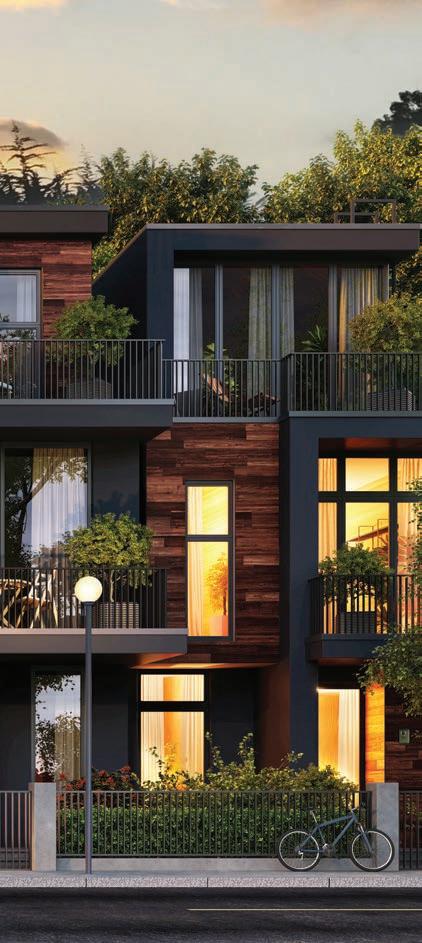
INVENTORY SURGES
Second quarter, which includes the busy spring buying season, saw the most dramatic swing in inventory. Sellers on the fence recognized that now was the time to sell to capitalize on the historically high prices. Conversely, the high prices naturally forced a cap on demand with fewer luxury buyers willing to pay. Stock market declines and other economic factors began to weigh down demand as well. There was also a smaller buyer pool since many had already purchased their primary homes during 2020 and 2021.
NEW INVENTORY SLIPS
Despite more overall inventory available in the third and fourth quarters, it was not enough to satisfy the increasingly discriminating buyers now in the market. Undesirable homes, especially those needing renovations or overpriced, sat on the market while new sellers paused plans to list new inventory in many markets. However, not every market saw the same drop in new inventory and overall inventory increases; some remained competitive seller markets by the end of 2022.
Price Stability and the Return of DISCRETIONARY BUYING
Despite turmoil in the financial markets and increases in overall inventory, luxury home prices remained relatively stable throughout 2022 and at near-record levels.
• A lack of new desirable inventory kept prices high.
• Buyers became more discerning.
• Emerging affluent consumers continued to place high value on owning a luxury home.
LOW DESIRABLE-INVENTORY LEVELS
One of the biggest challenges for both sellers and buyers in 2022 was the uncertainty of where prices would eventually settle. Should they sell now when the market is less favorable or wait to see if the market improves in 2023? Buyers were equally concerned, not wanting to pay current prices if they believed that values would trend down. This phenomenon kept the market in flux and was the reason why desirable inventory levels fell in the latter part of 2022. With so little desirable inventory on the market, it also kept prices stable.
BUYERS GET MORE DISCERNING
With the buying frenzy of 2020 and 2021 behind them, affluent buyers could focus on what they truly wanted in a home with less competition. Many refused to settle for anything less than total luxury, however they defined it. They put greater emphasis on home size, condition, and amenities, rather than location. That meant homes that did not meet their criteria languished on the market while the most desirable homes sold quickly at, or slightly over, asking price – keeping the year-to-year median luxury home price steady.

Conversely – because 2022 prices did not decline much from the previous year’s highs, rate-sensitive buyers suddenly found that their million dollars didn’t carry them as far.
They began searching for homes that offered them good value for their money. To sustain the same level of luxury they wanted in a home, some of them expanded their searches to emerging markets with better affordability. Some reduced their square footage requirements. Others took their money and invested it in a second home or income-producing property for a long-term hedge against inflation.
INTRINSIC VALUE OF LUXURY
Purchases made in 2022 ultimately reflect the intrinsic value placed on luxury properties by affluent individuals, especially the mass affluent. Indeed, a greater share of their wealth went toward real estate compared to other assets last year.

The purchase of homes valued over $1 million – a figure considered by the National Association of REALTORS® to be a benchmark for luxury residential real estate in the United States – tripled from 2.6% to 6.5% since 2018.
Some of this growth could be attributed to sheer volume since larger, more expensive luxury homes were in higher demand following the pandemic. It could also be viewed from the perspective of demand. A greater number of HNW individuals now consider owning a luxury property a necessity for their asset portfolio. All indications are that this trend is here to stay, even as buyers’ definition of luxury continues to evolve and experts expect demand to reset to a more sustainable level in 2023.
13.9% 16.2%

U . S . Luxury OUTLOOK
The 2023 luxury real estate market will be one of contradictions. To help you find your way through the fog of a fluctuating market, we compiled insights from Coldwell Banker Global Luxury® Property Specialists, Luxury Institute CEO Milton Pedraza, and other thought leaders on what lies ahead for the U.S. luxury real estate sector.

Consumer OUTLOOK
Inconsistency may be the new normal for affluent consumers. Net-worth gaps are expected to emerge in 2023, revealing different sets of priorities and values. Read on for further insights into affluent consumers’ shifting mindsets and a comprehensive view of the challenges, opportunities, and trends to watch in the luxury sector over the coming year.

“ EXPECT INCONSISTENCIES TO REVEAL DIFFERING SETS OF PRIORITIES AND VALUES IN 2023.”
FROM CONSCIOUS SPENDING TO JOY-SEEKING
Despite growing numbers of high-net-worth (HNW) individuals worldwide with access to disposable income, economic uncertainty this year could cause some of them to momentarily temper their spending.
This trend is expected to be most pronounced in the mass affluent sector, as these individuals focus on shoring up their personal finances, careers, and mental health. Some may embrace ideas like “conscious spending” and “minimalist luxury.”1 The mindset of buying fewer but better items is especially appealing to younger generations of affluent consumers who tend to be more socially and environmentally conscious than their older counterparts.
Meanwhile, ultra-high-net-worth (UHNW) individuals who are better positioned to weather economic declines, are poised to drive demand for the highest priced properties and luxury goods this year, buoying the overall luxury sector. These individuals tend to be more mature in age and are still embracing a “You Only Live Once” (YOLO) mindset when it comes to the pursuit of experiences or things that bring them personal enjoyment. A renewed focus on generational wealth creation, as well as the prioritization of wellness, travel, and leisure will remain utmost for them.

“ CONSCIOUS SPENDING FOR SOME AND PURSUIT OF PERSONAL ENJOYMENT FOR OTHERS ARE TRENDS FORECASTED FOR 2023.”
Q&A with MILTON PEDRAZA
As CEO of the Luxury Institute, Milton Pedraza has his finger on the pulse of luxury consumer trends. Here, he offers his insights into the shifting values and desires of affluent consumers as they transition from a “boom” to a “buoyant” mentality in 2023.


What is your general outlook for affluent consumer spending this year?
There is still a level of uncertainty about the economy, but because affluent individuals are generally economically resilient and have pent-up demand for experiences such as travel, wellness, and fitness, the overall luxury industry will grow in the single digits. My prediction is that growth will be about 3% to 5%, with the top 20% of all wealthy consumers generating 70% of sales and the bottom 80% – aspirational luxury consumers – driving about 30% of sales.
What is your outlook for luxury real estate?
Real estate spending will depend on who is buying the homes. For many UHNW individuals, they have so much money that a $10 million or $20 million home is insignificant compared to their vast wealth. They won’t be deterred. Many of them are older and are still in the “seize the day” mindset that started during the pandemic. They are still saying, “Life is short. I’m living for now and I’m going to buy whatever I want to enjoy for today.”
Aspirational luxury consumers are much more sensitive to stock market declines and inflation eating into their buying power, so they will be more cautious this year. Some are predicting a white-collar recession as companies cut back and lay off employees, which could impact demand for homes in lower luxury home price points.

To some extent, many affluent consumers have been psychologically impacted by the economic concerns of the moment. They also don’t want to be seen as ostentatious at a time when there is suffering or cutting back.
The net of it all, though, is that the luxury sector will be resilient because of that 20% who continues to buy. They just might choose to invest less in luxury goods, and more in the areas of wellness/health, travel and leisure, and fitness/nutrition.
In what ways do you see younger generations of luxury consumers impacting the market?
They want luxury brands to be ethical, charitable, and sustainable. The company must have good values – be socially responsible, treat their employees with respect, and contribute to good causes. They like to see companies not just talking about it, but taking action. They are more discerning about these things. They are not necessarily willing to pay more for it – at least not yet.
“ THE LUXURY SECTOR WILL BE RESILIENT BECAUSE OF THE [TOP] 20% WHO CONTINUE TO BUY.”
The other way I see younger affluent consumers impacting the market is their focus on longevity. Much earlier in life, affluent consumers are becoming aware of good health, nutrition, wellness, and beauty. They are taking care of themselves at a much earlier age.
What do you think will be affluent consumers’ top priorities for 2023?
I think some will be worried about their jobs – especially younger consumers – so they will temper their expenditures. Their priorities will be health, wellness, and fitness, followed by travel, leisure, and technology that enhances their lives. There is a lot more discernment in luxury goods categories–like, “How many handbags or watches do I need?”

They are operating from a far greater sense of vulnerability than before because of COVID-19. Their lives were also completely upended by the pandemic. Perhaps for the first time, they felt like they had an uncontrollable future. These experiences have generated a greater sense of connectedness to the world. They want to be good citizens and not be so ostentatious with their spending. That is the one commonality I see across all generations of HNW individuals. There is this sense among them, “I’m lucky and very fortunate in my life, and I need to be generous, kind, and emotionally intelligent.” Relationships matter to them more than ever.
How do you see the HNW mindset evolving this year, especially when it comes to homebuying?
Homebuying may slow down this year. There is a sense of caution in the market. Buyers don’t want to be the ones who bought at the top of the market. Sellers, on the other hand, are afraid of selling their primary home and having to go out and find another home, which will be more expensive. So they’re staying put. They are, however, buying second and third homes – especially UHNW individuals.
We noted the multiple-home ownership trend in The Trend Report 2022. What’s your take on why they’re amassing multiple homes?
If you’re an UHNW individual, you would rather go to another home of yours than a hotel. You want to share your home with your tribe. Some may even have their own private property exchanges amongst their friends.
Another popular trend: a lot of wealthy individuals are buying a home where their kids live. It may not even be in a traditional luxury center. They could have their primary residence in Naples, Florida, a second house in Nantucket, but their kids live in Buffalo, New York – so they buy a condo there that doesn’t need to be maintained just so they have their own private place to stay when they visit.
Younger people are also staying in the home longer. There is a stat – 40% of young adults, aged 29 and younger – still live at home.2 Parents need to make that work, so they may need a larger primary home with enough separation, or they purchase a house in another location as a getaway. They’re also renovating and building extensions on their existing homes to accommodate all the kids and the grandkids. Multi-generational living has become a significant driver for the affluent demographic.
Going back to the idea of caution, what would you say to a HNW seller who is wary about putting their home on the market this year?
Live your life. If you have that kind of money, it isn’t as important as doing what’s best for your life, in terms of the
“ MULTI-GENERATIONAL LIVING HAS BECOME A SIGNIFICANT DRIVER FOR THE AFFLUENT DEMOGRAPHIC.”
joy of your life and happiness. Life doesn’t last forever, so you have to gauge your enjoyment against the monetary consideration. What’s going to bring you joy?
Do you think the “live for the moment” attitudes that arose during the pandemic are still present?
If you have money and are of a certain age, you likely still have this mindset. You know that everything can change in a New York minute, so you are living for now.
If you are younger, you are more cautious because you have a much bigger time horizon. Millennials and GenZ also tend to be much more conservative with their purchases. They’ve lived through events like 9/11, the global recession in 2008, and the pandemic in 2020. These events have impacted their ability to accumulate wealth, and they are nowhere near where they should be in their wealth profiles compared to what Boomers had accumulated at their ages.
Where will the affluent be looking to put their money this year?
People will come back into the stock market slowly. If you are ultra-affluent, chances are, you are well-diversified. You’re putting your money into equity, capital investments, startups, and alternative investments like wine, art, etc.
During inflationary times, the wealthy tend to invest in goods that hold their value and appreciate over time – vintage cars, wines, and art. Real estate trust funds will be another area for investment opportunity.
What is your expectation for how their emotional needs might be changing, and how do you see that potentially playing out in real estate?
Because homes are now our cocoons and emotional centers, empathy, generosity, and creativity need to be the values of the modern real estate agent.

Going the extra mile and doing that special thing for your clients helps cement that relationship. Real estate agents need to remember that they are not in a product service business; they are in a human relationship business.
Final thoughts about 2023?
The U.S. economy is already showing signs of resilience despite recessionary fears, and we know that the luxury market is a resilient sector. Even if there is a momentary downturn this year, the wealthy will likely help lead us out of it. A tremendous amount of innovation can also occur in moments of challenge, as we saw during the pandemic. I’m very optimistic about the future for luxury.
Market OUTLOOK
VISION SURVEY
The Vision Survey gathers on-the-ground information from Coldwell Banker Global Luxury® Property Specialists who represent the top 10% of properties in their local markets.
This year, The Report surveyed over 600 Luxury Property Specialists around the world to understand where current and future purchasing trends were headed as the luxury housing market begins to rebalance after the COVID-19 homebuying boom.
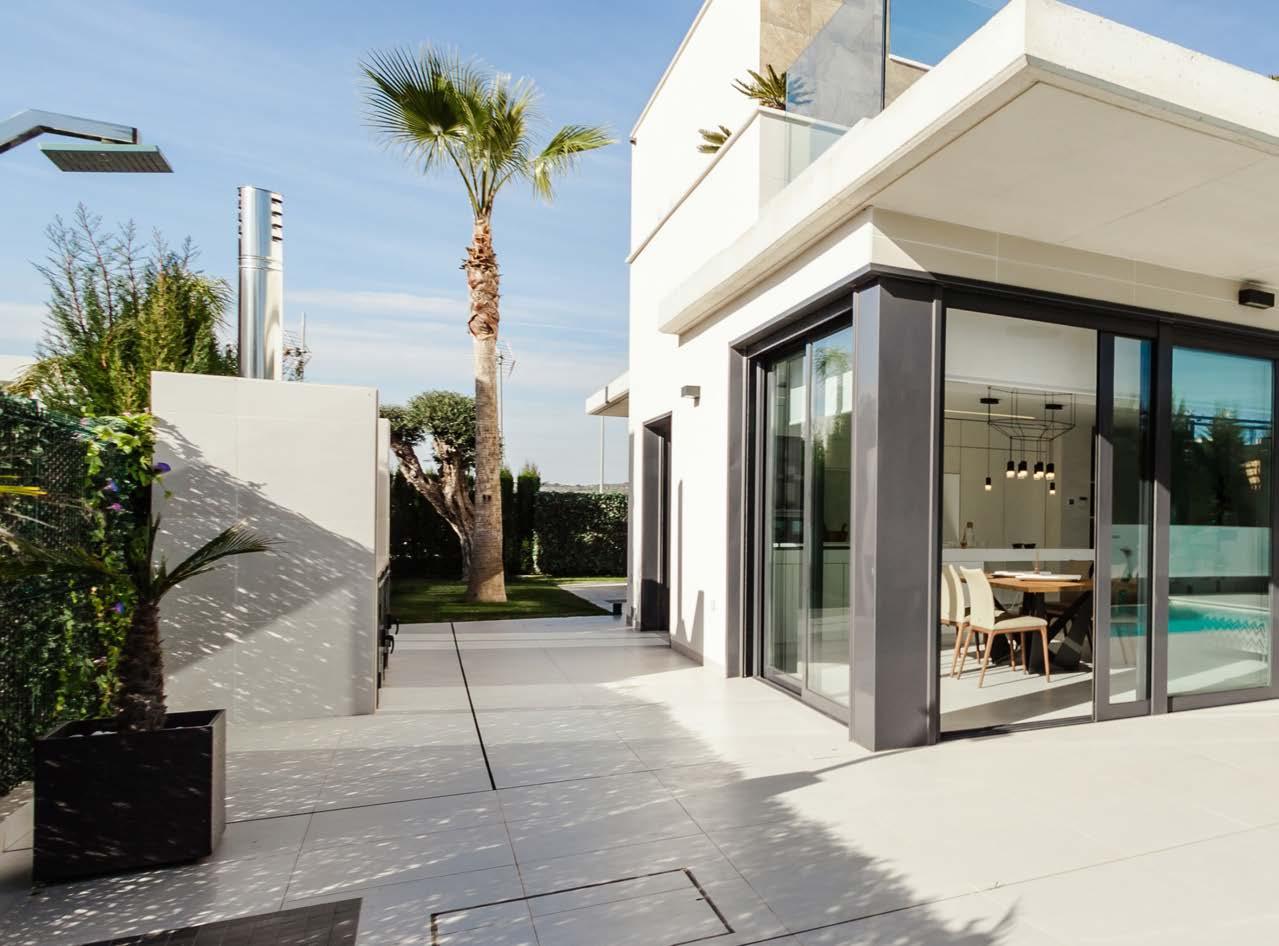
“ OVER 600 LUXUR Y PROPERTY SPECIALISTS WERE SURVEYED TO UNDERSTAND CURRENT AND FUTURE PURCHASING TRENDS.”
Their message was clear: the market is normalizing and it’s more important than ever for real estate professionals to go the extra mile when it comes to serving the needs of HNW clientele.
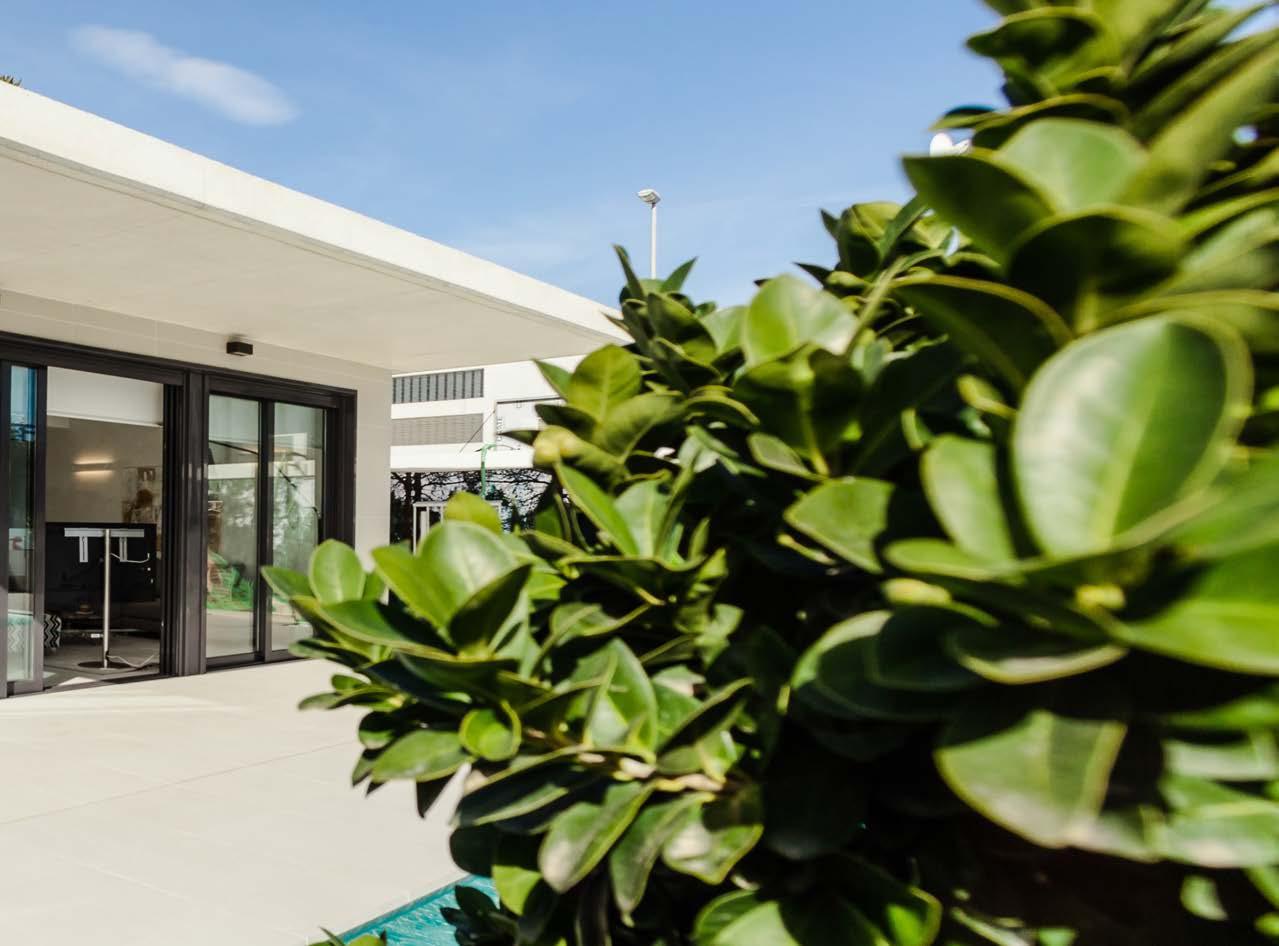
Luxury Property Specialists say they are already getting creative. Their top picks for networking strategies are curating their own “favorite things” direct mail campaigns, hosting a private event for their VIP clients, and using trending social platforms like TikTok. For showings, some agents will be looking to pull out all the stops to make their clients feel special this year – whether it’s tapping into the most sought-out designers and decorators to stage a home or creating a special experience for a potential buyer. Most (about 54%) say they plan to stay connected with their clients via regular check-in calls or texts.
KEY INSIGHTS FROM THE SURVEY REVEALED:
• Agent sentiment remains upbeat in spite of challenges
• Scales tilt in buyers’ favor, but sellers still hold the advantage
• Demand from out-of-state buyers expected to be strongest
• High-end home prices expected to remain relatively stable annually
• Primary home purchases, not secondary homes, will lead the market
• Location is driving decisions, but move-in ready homes are a priority
• “Have-it-all” properties with the perfect location, home condition, and amenities hit peak demand
TOP CHALLENGES
Higher interest rates and a looming recession continue to inject caution into the high-end residential market. An overwhelming majority (63%) of Luxury Property Specialists said that these were the two most common reasons for their clients pausing their buying or selling plans.
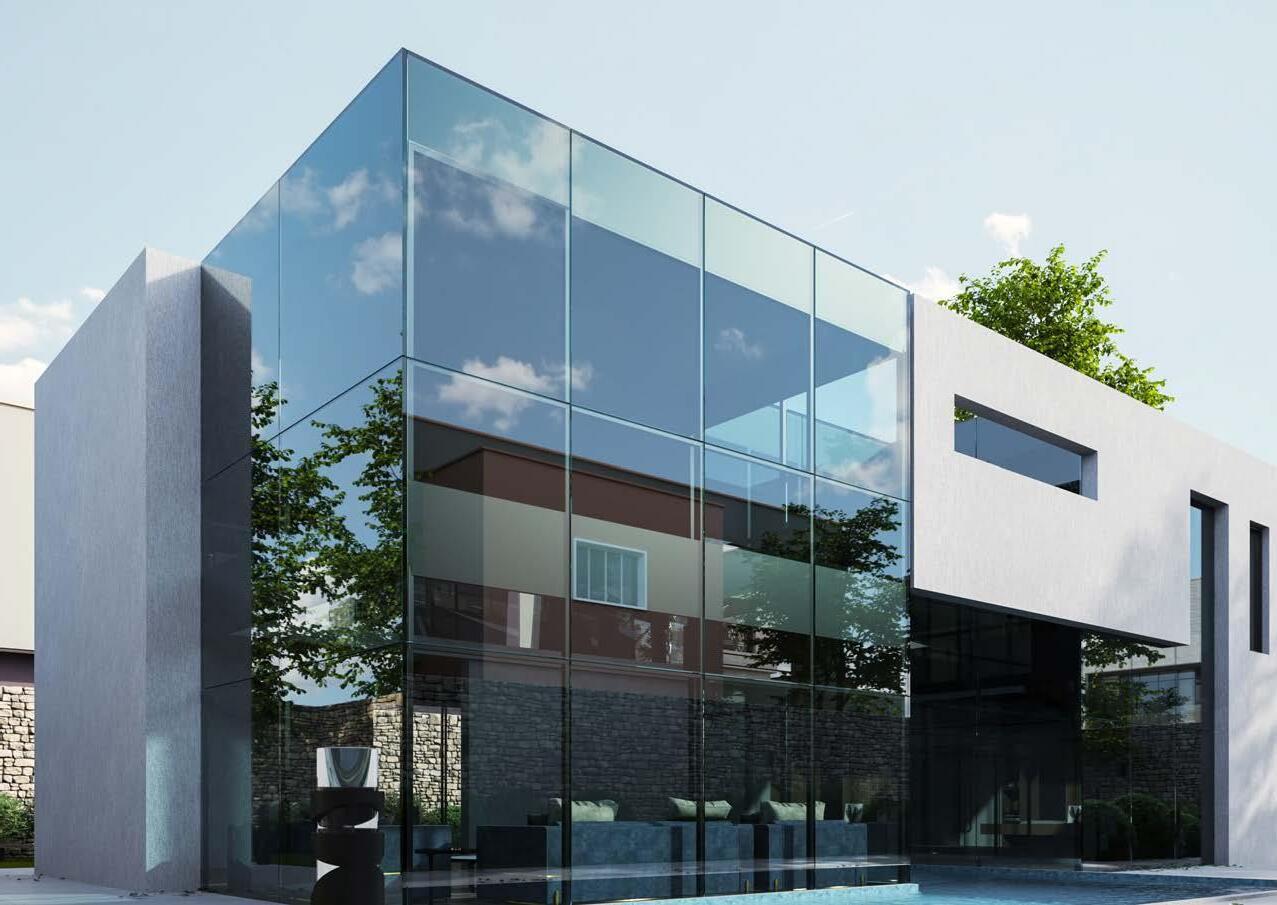
HNW clients also appear to be sensitive to stock market declines as Wall Street ended 2022 with its largest annual percentage drop since 2008.3 High home prices and inflation were less of a concern.
PRIMARY CONCERNS FOR BUYERS AND SELLERS IN 2023
6.5%
13.2%
17.5%
35.0% 27.8%
Rising interest rates
Looming recession
Stock market declines
High home prices
Inflation
OUTDATED SELLER EXPECTATIONS, BUYERS SITTING ON SIDELINES, AND LOW INVENTORY
Happening concurrently with consumer caution, regional differences and inconsistent market conditions have made it difficult for some buyers and sellers to adjust to their new reality. The majority of Luxury Property Specialists indicated that their greatest 2023 challenge is sellers having outdated expectations based on market conditions that were present during the pandemic homebuying boom.
Meanwhile, most Luxury Property Specialists said that their greatest challenge on the purchasing side is buyers waiting for significant price declines. While inventory levels may be improving in some markets, many of the hottest markets are still plagued by low inventory – presenting challenges for both sellers and buyers.
Too many buyers are chasing too little desirable inventory, whereas sellers fear they won’t be able to find a replacement property should they list their home, which only contributes further to low supply.
BUYER CHALLENGES IN 2023
SELLER CHALLENGES IN 2023
Buyers waiting for significant price declines
Lack of new inventory
Properties not meeting search criteria (price, size, location, condition, etc.)
Sellers won’t negotiate
Outdated expectations based on 2020-2021 market conditions
Seller fears of not being able to find a replacement home if they sell
Sellers don’t need to sell
Seller hesitancy for financial reasons
“ MANY OF THE HOTTEST MARKETS ARE STILL PLAGUED BY LOW INVENTORY – PRESENTING CHALLENGES FOR BOTH SELLERS AND BUYERS.”
CONSISTENT DEMAND AND PRICE STABILITY INSPIRE OPTIMISM
Despite these challenges, Luxury Property Specialists remain generally upbeat about the high-end residential property market. Most said that they expect demand to stay the same from 2023 to 2024. More than half also said that they expect 2023 luxury home prices to remain flat or up slightly from 2022.

EXPECTED DEMAND FOR LUXURY PROPERTIES IN 2024

BUYERS GAIN GROUND
After two years of bidding wars, low housing supply, and soaring prices, many Luxury Property Specialists surveyed said market conditions for buyers would be slightly better in 2023. More than a third rated market conditions for buyers as fair and 32% rated them as good. Still, another 30% of them said that conditions would still be challenging for buyers – a sign that not all markets are equal.
SELLERS STILL IN DRIVER’S SEAT
Buyers may be regaining some negotiating power, but sellers still have the upper hand in many housing markets. Over 75% of Luxury Property Specialists said that market conditions would be either fair or good for sellers in 2023.
32.0% 37.1% 30.9%

“ BUYERS MA Y BE GAINING SOME NEGOTIATING POWER BACK, BUT SELLERS STILL HAVE THE UPPER HAND IN MANY HOUSING MARKETS”
THE TRIFECTA: LOCATION, HOME CONDITION, AND AMENITIES
Did the real estate golden rule, “location, location, location,” get disrupted after COVID-19 made it possible for more people to live and work from anywhere? According to Luxury Property Specialists, the answer is…no, but it’s complicated.
More than half said that property location is still the most important factor driving their clients’ decision-making process for both primary and secondary homes. However, one in four said home condition and amenities are the most important.
This trend appeared again when asked what types of luxury properties are highest in demand. Half of the respondents said properties based on location were the most desirable, followed by nearly a quarter that claimed move-in-ready homes were most sought-after.
Several respondents indicated that hybrid properties that offer a combination of location, home condition, price, size, amenities, or views were also highly sought-after in their markets. A “haveit-all” mentality could become a larger influence in the high-end residential market this year as buyers flex their leverage and become more selective, refusing to settle for anything less than the perfect property that checks all of their boxes.
PRIMARY HOME DECISION PRIORITIES
“ MORE THAN HALF SAID THAT PROPERTY LOCATION IS STILL THE MOST IMPORTANT FACTOR.”
LUXURY PROPERTY TYPES IN DEMAND
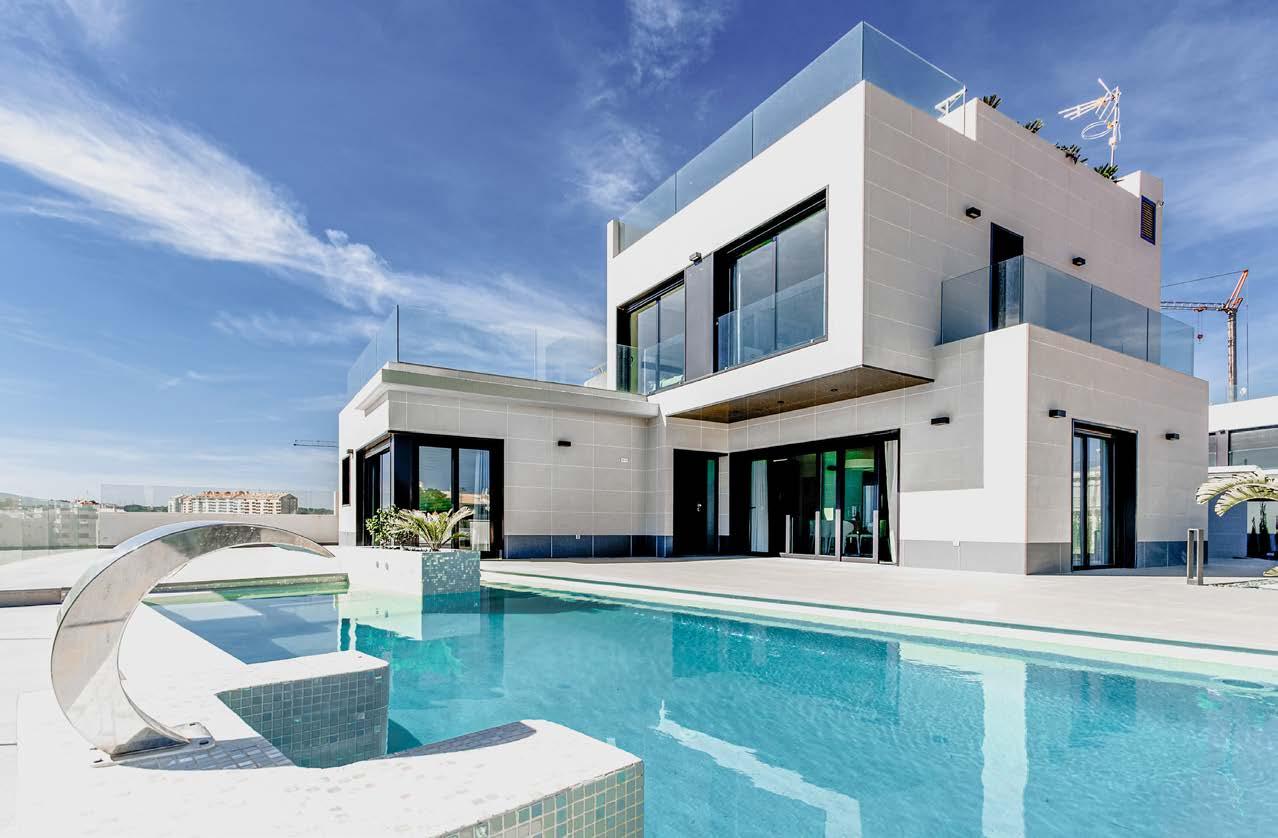
The LIST
Welcome to The List 2023: our collection of the top trends, values, and preferences influencing HNW homebuyers and sellers.
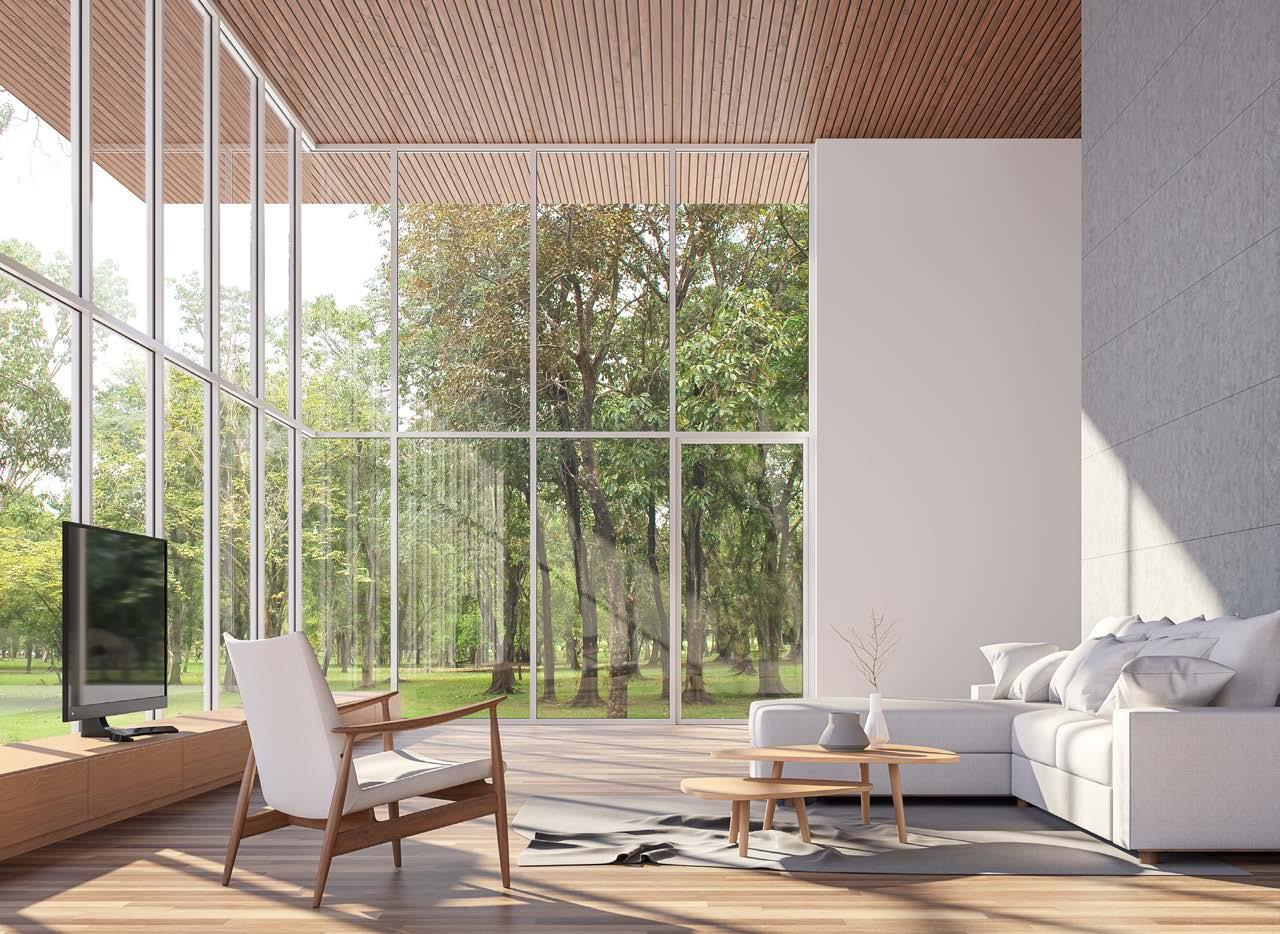
WHAT’S DRIVING THE 2023 HNW CLIENT?
We asked over 600 Luxury Property Specialists and they told us what’s top of mind for their clients this year. What are the latest high-end buying trends, what’s most-wanted when it comes to home amenities, what defines a dream home today, and what tech amenities do they think have the most value today? The List explores everything from what’s currently shaping their clients’ real estate decisions (lifestyle changes still win the day) to the qualities their clients most want in a luxury real estate professional (think integrity and credibility).
TOP LUXURY REAL ESTATE TRENDS
Must-Have Home Amenities
Indoor-outdoor living spaces
Chef ’s kitchen with the latest features
Breathtaking views
Most Valuable Tech Amenities
Home automation systems
Smart, energy-efficient appliances EV charging stations
Design Trends with Staying Power
Open floor plan
Bespoke architectural elements
Neutral color palettes
Top Client Professions Entrepreneurs
Doctors/lawyers Tech Experts
Top Luxury Property Specialist Qualities
High creditability and visibility
Unparalleled communication Local knowledge
Source: Coldwell Banker Global Luxury® Property Specialists Survey 2023
Source: Coldwell Banker Global Luxury® Property Specialists Survey 2023
Secondary Homes Move From Niche Market to MAINSTAY
The majority of Coldwell Banker Global Luxury Specialists say that their HNW clients are looking for primary residences – and that may be true, depending on the market they represent – but recent data also supports the opposite narrative. The affluent still appear to be on the hunt for secondary homes despite higher interest rates eating into their affordability.
MORE SECONDARY-HOME OWNERS THAN EVER BEFORE

The secondary-home ownership trend gained prominence during the pandemic as remote work took root along with
growing wealth and stock market portfolios. With remote work expected to be permanent for many high-income earners, secondary desires – like creating generational wealth, the need for long-term wealth-building assets, and a strong push to spend quality time with their favorite people in memorable locales – have coalesced around secondary homes, taking them from a niche market to a mainstay of the affluent lifestyle.
According to Wealth-X, the number of U.S. homeowners with a net worth of $5 million+ jumped from 1,255,710 to 1,675,756 from 2021 to 2022 – a 33% increase.
The percentage of those who own two or more properties also increased from 70% in 2021 to 79% in 2022 – with the most significant increase going to those who own three or more homes.
This trend aligns with the findings from a 2022 Coldwell Banker Global Luxury/Censuswide survey of 2,000 U.S.based HNW individuals, featured in The Trend Report 2022, which found that 72% of respondents said that their new home would be either a second residence, rental property, or vacation home.
WHO IS DRIVING DEMAND?
While baby boomers were thought to be prevalent buyers of secondary homes during the pandemic, they are not expected to play as prominent a role in the market since many of them have likely already secured these homes.
The next wave of secondary-home buying, rather, is predicted to be driven by Gen-X and millennials.
However, they’re not looking for the same types of secondary homes as their parents or grandparents. They prefer hybrid properties – ones that they can use as parttime getaways and rent out the rest of the time while building wealth. This is especially true of millennials, those born between 1981 and 1996, who have lagged behind in homeownership rates of previous generations.
Priced out of big cities, where home prices have substantially risen, some financially savvy millennials have started to bypass the starter home altogether in favor of purchasing escape homes in further-out, lesserin-demand locations that offer plenty of recreation and adventures.4 These homes tend to be smaller and less expensive, on average, and that’s just fine with them. It’s all part of their wealth-building strategy.
Social media influencers are thought to have a partial hand in this trend. Some have encouraged their followers to purchase “experiences” and invest in “assets not
liabilities.” From their point of view, buying secondary homes can provide younger investors with the best of both worlds – a steady revenue stream that can help them build wealth and a property that they can escape to whenever they please.
“Owning properties in different locations offers them a variety of experiences and lifestyles,” said Michael Altneu, Vice President of Global Luxury for Coldwell Banker Real Estate LLC. “The flexibility of remote work has really made this possible over the last few years. Millennials, who tend to value experiences rather than things, appear to be fully leaning into this idea.”
“
72% OF HNW MILLENNIAL RESPONDENTS SAID THAT THEY PLANNED TO BUY A SECONDARY, RENTAL, OR VACATION HOME IN THE NEAR FUTURE.”
Metropolitan Areas
New York, NY
Silicon Valley, CA
San Francisco, CA
Los Angeles, CA
Chicago, IL
Washington, D.C.
Philadelphia, PA
Boston, MA
Houston, TX
Inland Empire, CA
WHICH MARKETS ARE DRIVING SECONDARY-HOME OWNERSHIP?
According to Wealth-X, New York has the highest population of HNW individuals who own secondary homes in other cities. Silicon Valley, the San Francisco Bay area, Los Angeles, and Chicago followed. Not a surprise, given wealthy East Coasters and mid-Westerners’ propensity for flocking to warmer climes during winter months, and Californians’ love
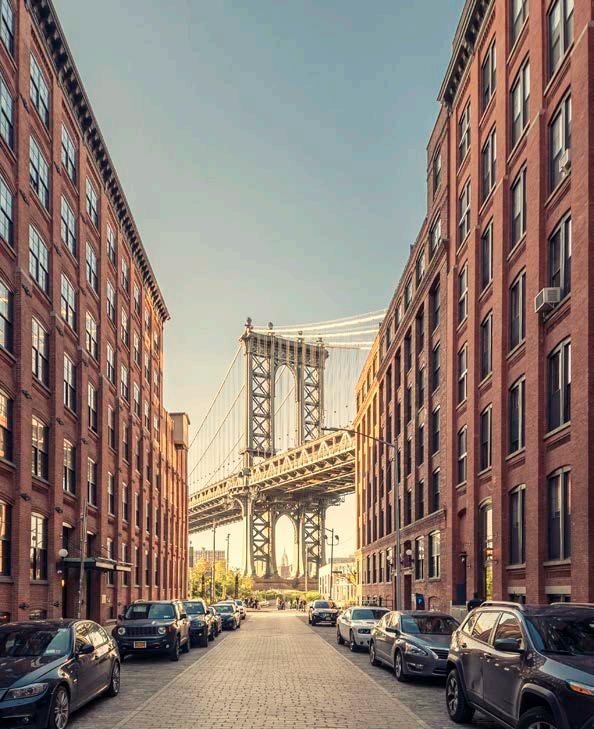
#
39,053
23,377
17,431
16,792
16,144
10,984
10,730
10,659
8,481
7,831
*Number of individuals with a net worth of $5 million+
of the mountains, desert, or beach for a change of pace. New York, Los Angeles, and San Francisco are also known for having some of the country’s most expensive real estate, possibly prompting some savvy residents to purchase more affordable secondary homes elsewhere.
The top two metropolitan areas with the highest concentration of secondary-home owners with a net worth of $5 million+ are two of the most expensive coastal areas: New York and Los Angeles. It is noteworthy that these cities – already known to be epicenters for UHNW individuals – are equally in high demand by HNW individuals in lower wealth brackets. These metros also have the highest populations of affluent primary residents in the United States.
It’s interesting to see the proportion of primary residents compared to the proportion of secondary-home owners in resort markets like Miami and Naples, which emerged
as secondary-home hotspots during the pandemic for wealthy New Yorkers and mid-Westerners. The Denver metro area’s appearance among the top 10 also speaks to the Rocky Mountain region’s growing appeal as a playground for young, wealthy, coastal transplants from New York and California.
TOP 10 M ARK ETS FOR SECONDARY - HOME OWNERS
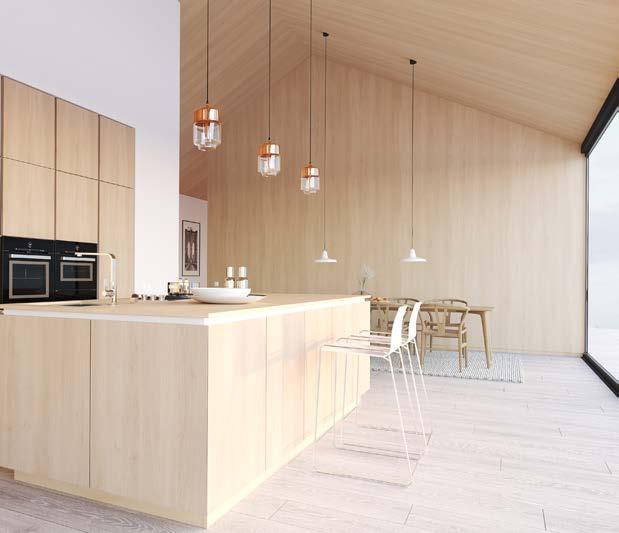
Los
San
Washington,
Silicon Valley, CA
Naples, FL
Boston, MA
Chicago, IL
Denver, CO
SECONDARY-HOME MARKETS DIVERSIFY
The secondary-home market is not a niche sector anymore. In a sign of the secondary-home market’s solid footing, nearly half of all individuals with $5 million+ in net worth now own three or more homes. If the U.S. stays on its current trajectory and the population of HNW individuals grows over the next several years as forecasted by Wealth-X, this number could be much larger in the future. This means more of these luxury buyers will likely be entering the scene in search of their next vacation spot or an extra source of income – and that means more diversification could be on the way.
In the early days of the pandemic, there was a notable shift to premium resort/recreation markets such as Napa, Kauai, Naples, Aspen, and Lake Tahoe. Then, as affordability shrank and inventory levels deteriorated, some buyers shifted their focus to adjacent locations like Bonita Springs, Snowmass, and Truckee. Meanwhile, large cities like New York, initially hit hard by the pandemic and then rebounded, got help from locals who capitalized on the opportunity to snap up a secondary income-producing apartment when prices were low.
In 2023, the expectation is that a mix of premium and more affordable secondary-home markets, as well as some resort and urban locations, will hold their own. We could also see modest price growth in some of these locations if inventory remains tight and small price drops in others, which could give weary buyers a chance to return to their dreams of escape or pursue their goals for long-term financial security.
For example, prices increased modestly toward the end of 2022 in Napa wine country and Arizona’s favorite snowbird spot, Scottsdale, in a show of demand strength. Meanwhile Cape Cod, Lake Tahoe, and Naples, Florida, could present new opportunities for secondary-home buyers this year thanks to rising luxury home inventory levels and softening prices in fourth quarter 2022. Settings with access to nature – in the mountains, near national parks, or along the water – will particularly remain fertile buying ground as HNW individuals continue to prioritize their mental wellbeing and personal life enjoyment.
“ THE PREVALENCE OF REMOTE WORK AND THE DESIRE TO CREATE MEMORIES AND EXPERIENCES WITH THOSE THEY LOVE HAS CREATED
‘A NEW NORMAL’ FOR SECONDARY HOMES AMONG THE AFFLUENT.”

Resetting EXPECTATIONS
The market is in flux, so what can we expect during this transitional year? Certainly, the market has evolved from the red-hot conditions seen over the last few years. Does it indicate a dire market to come, though? Likely not. In the luxury world, the data paints a picture of a changing market–but not one without opportunity, for buyers or for sellers.
As always, and perhaps even more so than in recent years, the key to success in 2023 will lie in agents’ hands and, primarily, their ability to network, market, and keep their fingers on the pulse of their own unique communities.
As Jade Mills, of Coldwell Banker Realty in Beverly Hills, put it, “Think of 2023 as the year we come back to normalcy. Conditions will be different, but opportunity will still be there for those who want to seize it.”

“ THE LUXUR Y REAL ESTATE MARKET IS CURRENTLY IN FLUX.”
AN EASIER TIME FOR BUYERS – BUT NOT A BUYERS’ MARKET
Though there is no crystal ball to predict the future, one thing is all but certain: Buyers will not face the uphill battle they did over the last few years in 2023.
Luxury inventory rose significantly during the second quarter of 2022, easing pressure and reducing competition for eager buyers. In 2023, inventory levels are a wild card, but many housing forecasts are calling for an increase.
Despite these headwinds, though, buyers will not have a waterfall of options — just more than in the previous two years. According to the Institute for Luxury Home Marketing, current inventory levels are about 25% below 2018-2019 averages, and many consumers will be hesitant to list as their investment portfolios waver and economic uncertainty ensues.
If mortgage rates remain high, some may also hold on to their properties to retain their existing low rates. According to data and analytics firm Black Knight, around 90% of mortgage borrowers have rates under 5%.5 Meanwhile, average 30year rates have sat at 6% or above since September, and Realtor.com projects mortgage rates will average 7.4% in 2023, trickling down to 7.1% by 2023’s year-end.6
Still, even slightly more inventory will mean more negotiations and, more than likely, longer times on market, especially for homes not expertly marketed, staged, and prepped.
“Buyers are going to have a little more power in the luxury market this year,” said Liz Gehringer, President of Coldwell Banker Affiliate Business and Chief Operating Officer of Coldwell Banker Real Estate LLC. “Balance is coming back into view.”
Thanks to this added power, buyers are apt to be more discerning when shopping for a home, and pricing will — and has already started to — reflect this.

The luxury median sale-price-to-list-price ratio (SP/LP%) sat at just over 97% at the end of 2022. While this is down from the 100% median seen throughout 2021, it’s still not back to pre-pandemic levels, indicating a cooling market but not an all-out buyers’ market in the least.
The exception lies in a handful of metros, where SP/LP% has declined 5% to 10% (or more). These include previously booming spots like the East Bay area, Seattle, San Francisco, Silicon Valley, and Austin. In the remainder of cities, it’s simply a more balanced market coming into view. National Association of Realtors’ Chief Economist Lawrence Yun said as much in his recent 2023 forecast.
“After a big boom over the past two years, there will essentially be no change nationally [in home prices],” the trade group’s chief economist said. “Half of the country may experience small price gains, while the other half may see slight price declines.7
Fortunately, the majority of luxury agents don’t project major price declines in their areas. According to our recent survey of over 600 Coldwell Banker Luxury Property Specialists, 61% expect prices to remain flat or even rise modestly this year.
“ HALF OF THE COUNTRY MAY EXPERIENCE SMALL PRICE GAINS, WHILE THE OTHER HALF MAY SEE SLIGHT PRICE DECLINES.”
STRATEGY AND NEGOTIATION: BIG SALES DRIVERS
Regardless of where prices head, “The days of expecting over-listing offers are likely over,” Gehringer said. “In most places, you can expect a pretty even playing field.”
Luxury Property Specialists largely agree. About 69% predict 2023 market conditions will be either good or fair for buyers; just slightly more — around 75% — predict the same for sellers.
It’s close to balanced, but the key is in the stark about-face from past years. Sellers have become accustomed to bidding wars, breakneck selling speeds, and endless negotiating power. Now that buyers are gaining some of that power back — both in negotiations and in the properties they have to choose from — luxury sellers will need to adjust accordingly.
That doesn’t necessarily mean bargain-basement pricing or thousands in concessions, but coming to the table ready and willing to negotiate will be key.
“I think their negotiations are going to be a bit more evenly matched this year,” Gehringer said. “Don’t expect any one party to dominate the other.”
Quality representation will also make all the difference. With buyers more discerning and hesitant, sellers who engage capable, skilled, and connected agents will rise to the top.
“Using an agent with a deep network and the ability to match a property with the right kinds of buyers is going to be the key to selling success in 2023,” said Michael Altneu, Vice President of Global Luxury for Coldwell Banker Real Estate LLC. “Standout staging and marketing will be vital, too.”
Survey data supports as much. According to the National Association of Realtors, eight in 10 buyers’ agents say staging makes it easier for consumers to visualize a home.8 More importantly, most sellers’ agents say staging directly impacts the bottom line. Over 40% say staging increases offers by 1% to 10%, while 9% say the jump is 11% to 20% — a significant amount of cash on a luxury transaction.
In addition to staging, agents can also recommend key upgrades to make properties more marketable for today’s choosy buyers. Our survey shows that luxury buyers put high stock in chef’s kitchens, indoor-outdoor living spaces, top-notch views, and privacy. Well-appointed home offices are also in high demand.
“Understanding consumer preferences and catering to those aspects is now more important than ever,” said Danny Hertzberg of the Jills Zeder Group with Coldwell Banker Realty in Miami Beach.
MARKET CONDITIONS FOR BUYERS IN 2023
MARKET CONDITIONS FOR SELLERS IN 2023

AN EYE ON MARKET VARIABILITY
All real estate is local, but the variability between markets will be palpable in 2023. With prices trending up in some, down in others, and inflation impacting sectors and geographic areas very differently, luxury buyers are likely to be on the move this year.

Realtor.com shows that cross-market demand— or buyers shopping for homes outside their local area — reached record levels in 2022, accounting for nearly 61% of the site’s listing views. This year, the trend’s likely here to stay.9
With the continued work-from-home arrangements many HNW individuals enjoy — not to mention the more discerning approach they’re now able to take to home shopping, 2023 will be the story of migration and relocation in luxury real estate.
“We’re going to see a lot of shifting preferences as far as location goes,” Altneu said. “While these probably won’t be price-driven, you can expect luxury buyers to seek the most well-suited properties they can find — no matter where they might be located.”
Agents appear to be poised for these changing trends. Only a third of luxury agents expect the majority of their sales to come from local buyers. Four in 10 think out-of-state buyers will make up the bulk of their clientele, while nearly a quarter expect purchases from other parts of their state.
However you slice it, 2023 is ushering in a changing luxury market, one where agent representation matters more than ever. The network, expertise, and local knowledge an agent brings will play a critical role in just how successful sellers and buyers can be.
As Altneu noted, “The market’s shifting, but with the right agent on their side, any luxury consumer can achieve their goals in 2023.”
“ 2023 IS USHERING IN A CHANGING LUXURY MARKET, ONE WHERE AGENT REPRESENTATION MATTERS MORE THAN EVER.”

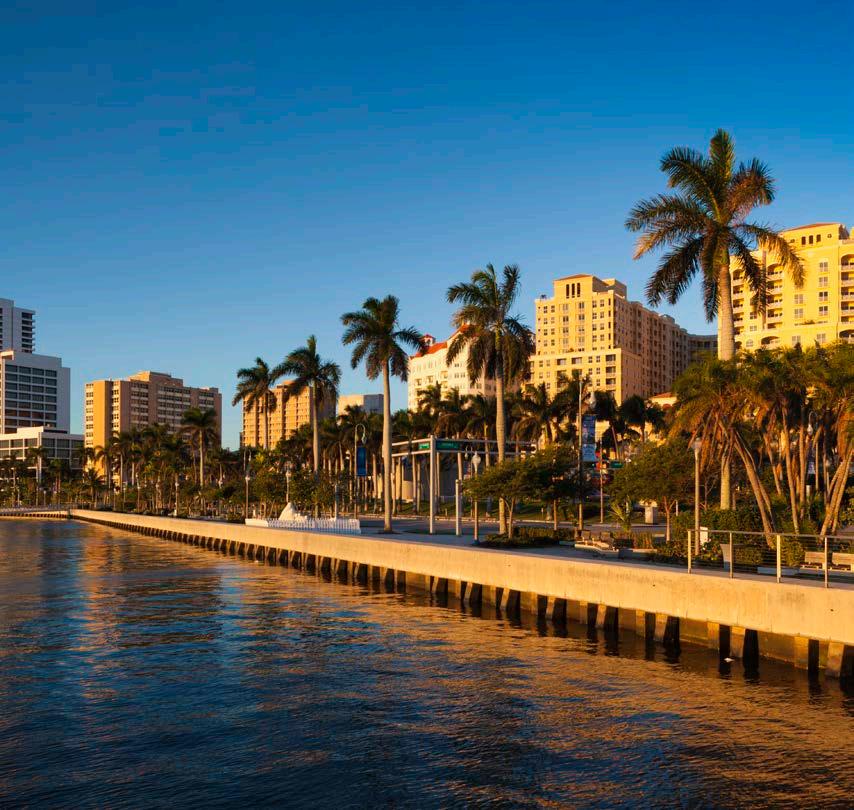



The Opportunity INDEX
Review of 125 U.S. Luxury Home Markets*

What will define a luxury real estate opportunity this spring? In a market of contradictions, it depends on your perspective – and whether you’re a buyer or a seller.

Searching for OPPORTUNITY
Buyers and sellers naturally have different ideas about what constitutes an opportunity market. If you’re a buyer, you might say it’s a market where you have your pick of desirable properties and room to negotiate on price. If you’re a seller, you’re likely to say it’s all about price growth – but you also need to be able to find a replacement property.
Current market conditions have presented buyers and sellers with several conundrums this year. Demand has slowed in certain locations, yet supply is still low and prices are softening in some places. This unique set of circumstances has made it challenging to identify opportunities for individuals on both sides of the real estate transaction.
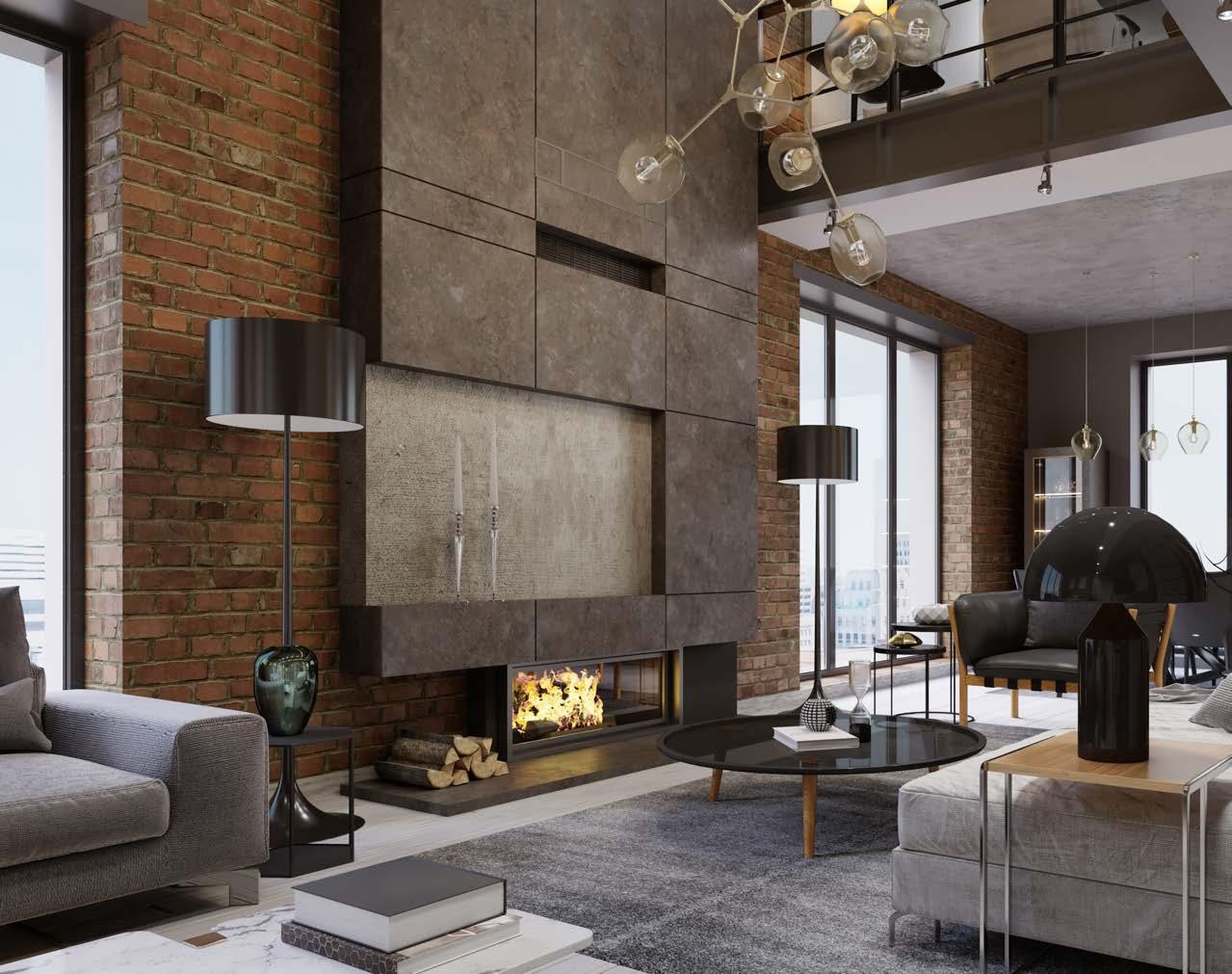
To help you find clarity and make sense of this year’s real estate paradoxes, we studied 125 major high-end residential markets across the United States to uncover the places that could present the most exciting buying and selling opportunities this spring.
METHODOLOGY
The Opportunity Index evaluates and ranks 125 U.S. markets based on buyer and seller opportunities. To determine the score for each type of opportunity, we chose to allocate rankings based on:
1. Sales Ratio for the last four months of 2022*
2. The median sale-price-to-list-price ratio (SP/LP%) for the last four months of 2022*
3. Inventory Growth over the last four months of 2022 compared to the first eight months of 2022
This ranking provided a score where the ceiling is 100.
* The Institute of Luxury Home Marketing analyzed the final four months of 2022 rather than annual data because the slowdown in first quarter 2022 from 2021’s all-time highs would have distorted the current market picture leading into the spring 2023 buying season.
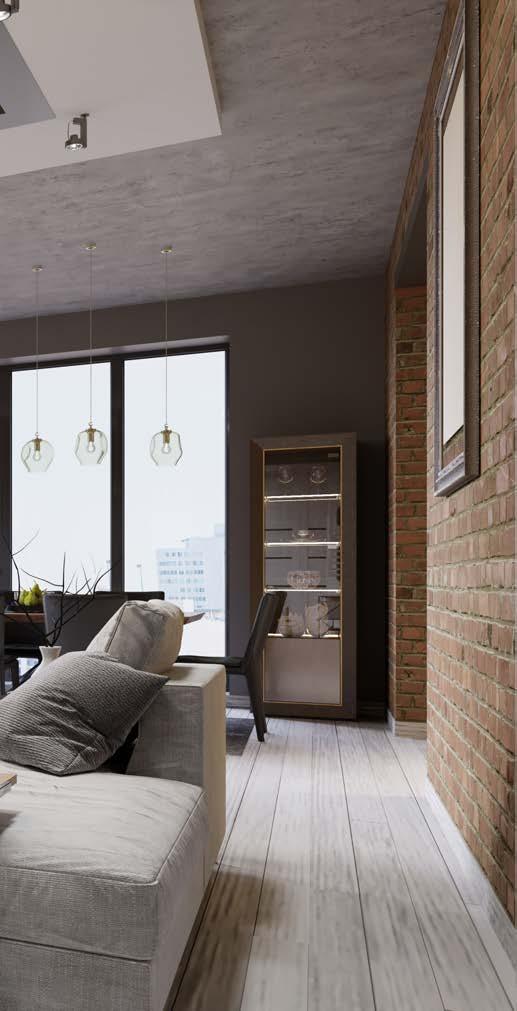
WHAT’S A SELLER OPPORTUNITY?
Scores were awarded for opportunity where the market shows that it still favors the seller as demand is higher than supply, and sold prices are at or close to asking. In addition, we also looked at whether there has been an increase in inventory, allowing sellers to purchase a new home.
WHAT’S A BUYER OPPORTUNITY?
Scores were awarded for opportunity where the market shows that it favors buyers with higher supply than demand and sold prices are 5% to 10% below asking. Additionally, we looked for significant increases in inventory, giving buyers more listings to choose from.
A Seller’s PERSPECTIVE
With the onset of the spring buying season, luxury home sellers are rightly questioning if it’s the right time to put their homes on the market. Will they get their asking price? If they do sell, where will they move?

The locations that currently offer the best opportunities for sellers are those that are balanced – i.e., most of them can achieve their full asking price based on fair market value (or close to it) and have enough available home inventory to be able to find a replacement home in the same market. In many luxury home markets across the country, sellers can get close to asking prices since luxury home inventory is still not at a level that’s favorable to buyers.
To determine which markets rank highest as seller opportunity markets, we measured the SP/LP% of sold homes and buyer demand against the increase of available inventory in the last four months of 2022. The markets that presented the best prospects for sellers were closest to an SP/LP% of 100% and where end-of-year inventory levels increased by over 34% since August 2022 (which is the national average increase of inventory).
MIDWEST
Midwestern markets like St. Louis, Indiana’s Hamilton County, and Johnson County, Kansas, will likely be the friendliest to sellers in 2023. St. Louis was the No. 1 seller opportunity market with a 55% sales ratio (where demand was higher than supply) and the SP/LP% remained above 100% of asking price. Meanwhile, there was also a 43.38% increase in inventory. Thanks to stable home price growth and strong supply-demand dynamics, luxury sellers in St. Louis have a better chance of reaching their asking price and finding their next home without too much competition. Affordable Midwest metros1 like St. Louis have continued to fare well in 2023, with several topping the charts2 for residential markets to watch for good reason. These markets did not see prices rise as rapidly
as some coastal areas during the “Zoom” boom, and they often end up on “Best Places to Live” lists because of their affordability, good schools, and quality of life.
EAST COAST
Richmond, Virginia, took the third spot on our seller Index. Ranked No. 9 on U.S. News & World Report’s 2022 “Best Places to Live on the East Coast,” 3 the River City also may hold increasing opportunities for sellers this year – especially if they live in a desirable school district, their home is in good condition, and their home is priced well. 4 Inventory is tight yet improving and the SP/LP% logged in at 100% of asking price. The rapidly growing area of Raleigh, North Carolina, also ranked high on the Index for sellers.
A Buyer’s PERSPECTIVE
This spring, luxury buyers are expected to return to the market, but they will be doing so with greater selectivity as they look for homes that meet their specific criteria. They may see improving buying conditions – such as a better selection of available homes and more negotiating opportunities with sellers – but will they be able to get the home they want for the price they want?

The locations that currently offer the best buyer opportunities are those that have a larger quantity of properties to choose from (or where supply exceeds demand) combined with a flexible pricing environment. It’s not just about housing choice or negotiating power, however. Many of today’s affluent buyers are still willing to pay full asking price if the home checks all of their boxes – especially in higher price brackets where buyers tend to have more specialized tastes and needs.
To determine which markets rank highest in opportunities for buyers, we measured the SP/LP% of sold homes and buyer demand against the increase of available inventory in the last four months of 2022. The markets that showed the most promise for buyers have an SP/LP% that has fallen between 5% and 10% with rising inventory levels closest to 100%.
FLORIDA
Florida was a true pandemic paradise, thanks to its seemingly endless supply of sunshine, outdoor recreation, and no state income tax. The tides have started to turn for buyers in the Sunshine State this year. But remember, these statistics need to be put in perspective. While inventory is improving in some locations, it is still tight historically; conditions are more indicative of the “traditional” housing market years of 2018 and 2019.
Three of the top five opportunity markets for buyers are in Florida: Marco Island, the Palm Beach area, and Miami. Marco Island earned the No. 1 position since it has a 5% sales ratio (where supply is higher than demand) and the
SP/LP% hovers around 7% below asking price. Buyers in this Gulf-side oasis have more high-end properties to choose from, thanks to a 58.89% increase in inventory, which also allows them to negotiate on price.
MOUNTAIN RESORTS
Soaring demand depleted housing inventory and drove up prices in many mountain resort towns, making these destinations anything but hospitable to buyers by the end of 2021. Fast-forward to this spring, and buyers may find some breathing room in two alpine hotspots.
Colorado’s Summit County, home to the Breckenridge ski area, ranked No. 3 on the Index. Inventory levels have improved. Meanwhile, the 6% sales ratio and 94% SP/LP% have let buyers regain some negotiating ground. Buyers shouldn’t get too excited, however: prices have only come down slightly from record highs. The average home price in the county in 2022 was more than $1.3 million – the highest on record since at least 1980, according to Land Title data.5 Another peak pandemic darling, Nevada’s Lake Tahoe took the fifth spot.
Best of BOTH WORLDS
Still, the best opportunity of the 2023 spring buying season – one that’s impossible to capture on any index – could be a cross-market move if you’re the type who can live anywhere. If you own a home in one of the 20 markets ranked on the seller’s opportunity side, you can take advantage of current conditions when you list, then buy in a market that is growing friendlier to buyers. For all of this year’s inconsistencies and contradictions, the “buy low, sell high” investment strategy still holds its allure.
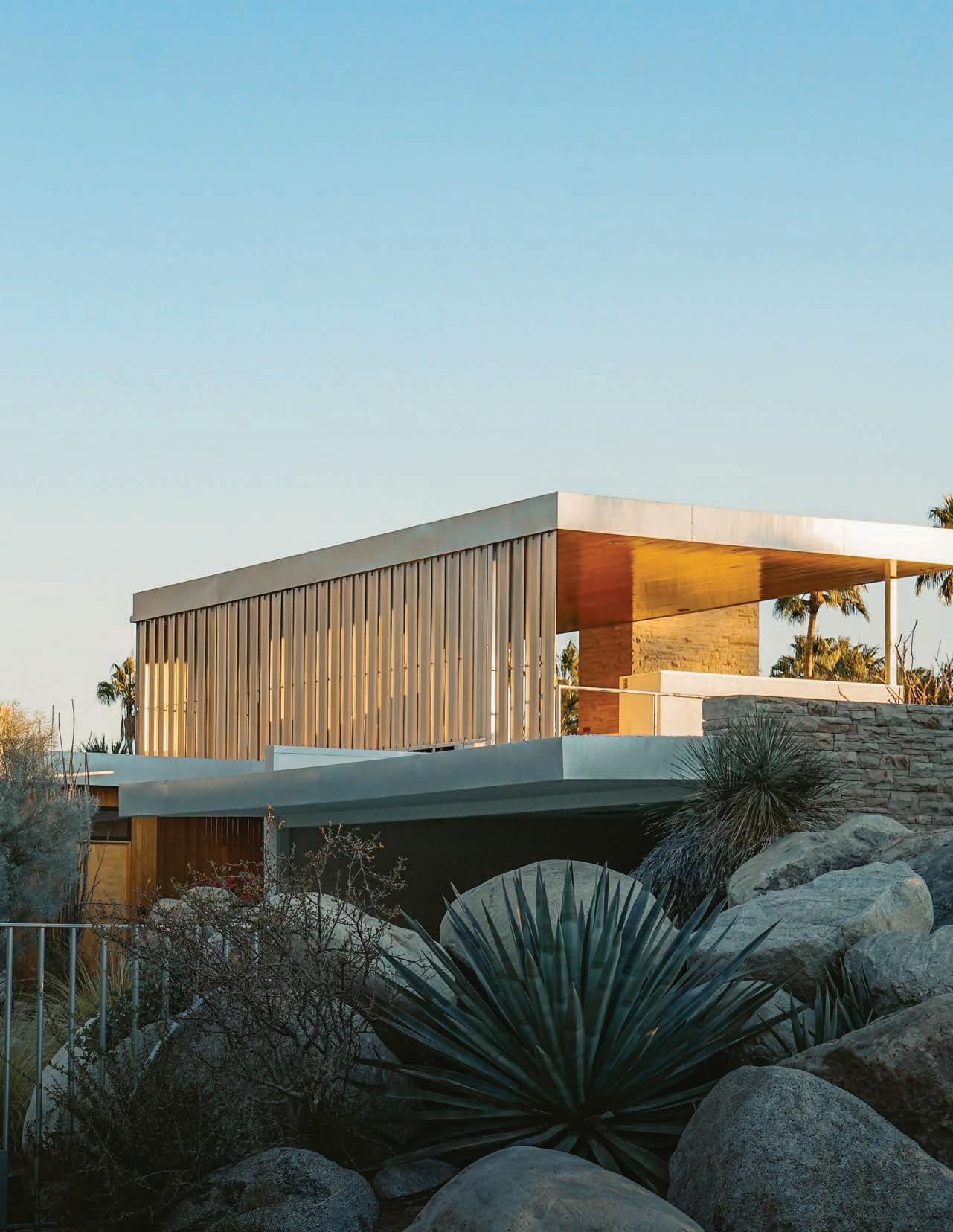
New NARRATIVES for 2023
The changing nature of the high-end housing market has given way to bold proclamations and media dramatizations. But do the latest headlines accurately reflect what’s really happening in the marketplace? We take a closer look behind several data points and theories to find several stories that paint a more nuanced luxury real estate picture for 2023.

The Psychology of PRICING
When mortgage rates started to climb in late 2022, the market entered an adjustment period. Some buyers pulled out, leaving more inventory and less competition for those who remained. It also put downward pressure on pricing, causing price growth to slow down or, in some cases, even reverse course.
But market conditions only play a small role in what’s happening on the ground in today’s housing market.
According to agents, psychology – particularly on the side of sellers – is playing an increasingly important part, too. Often, it’s even a major barrier to selling a home successfully.

“Most homeowners saw significant gains in their home’s value over the pandemic and have naturally tuned their pricing expectations to 2020 and 2021, when record low inventory and bidding wars were the norm and caused prices to skyrocket,” said David Marine, Chief Marketing Officer for Coldwell Banker Real Estate LLC. “Those were record years, but those conditions just could not be sustained.”

When it comes time to sell their home, not all sellers have been ready to set realistic price tags on their homes, thus leading to longer days on market. In fact, according to our Vision Survey, 40% of our agents say “outdated expectations based on 2020 and 2021 market conditions” are the greatest challenge to selling a home this year.
What’s behind the psychology of pricing, and what can be done to help sellers move their mindsets forward this year? Let’s take a look.
20 23 LISTING CHALL ENGES
Outdated selling expectations
Lack of replacement homes
INACCURATE COMPARISONS
Whereas the 2020-2021 markets were the hottest on record, driven by conditions the world has never seen before, today’s market is a more muted one – less volatile and more like the markets of pre-pandemic years (which were strong nonetheless).
“The market today offers a little more breathing room,” added Marine. “It’s not moving at the same breakneck speeds we saw a few years ago, but sellers still wield a lot of power. If they’d look back at the conditions of 2019, for example, they’d see they’re still in a great place to list.”
Another issue is the list vs. sale price dilemma. When browsing online listings, consumers only have access to the list price – which is often far higher than what a home actually sells for.
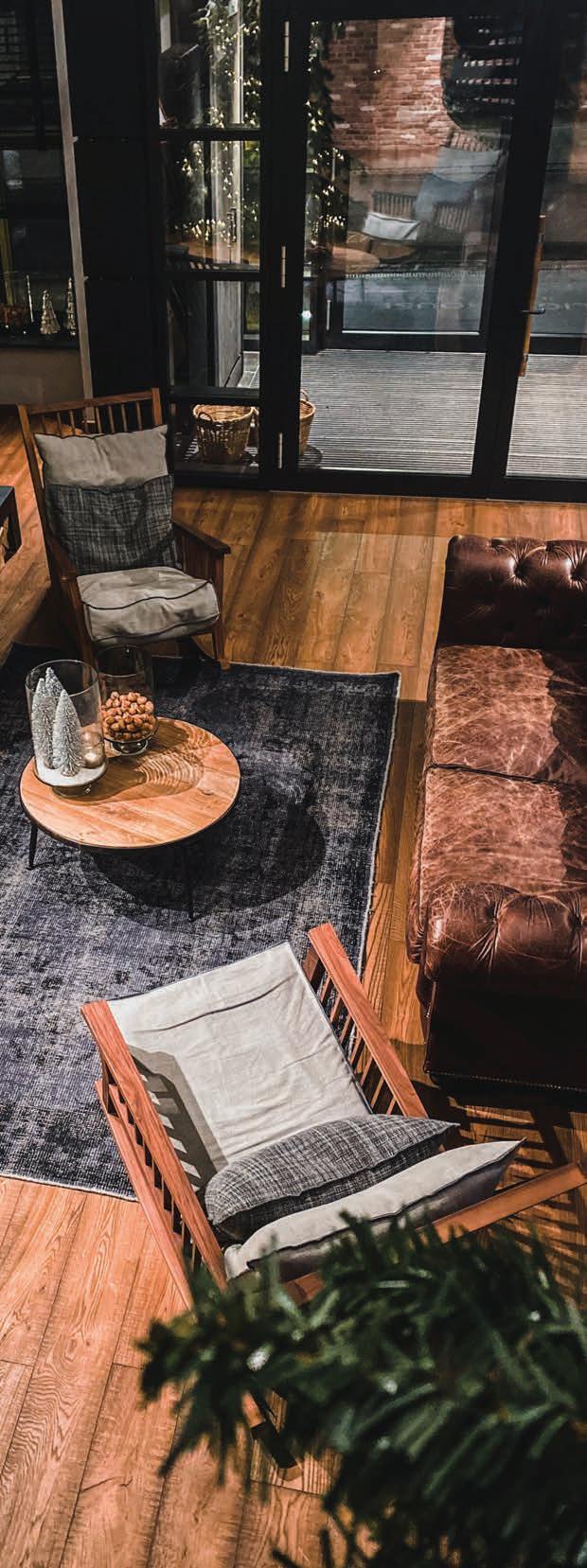
At the end of 2022, for instance, the median sale-priceto-list-price ratio (SP/LP%) average sat at 97% in the luxury market, meaning a home listed at $5 million actually sold for $4.85 million, per the Institute for Luxury Home Marketing. Monetarily, that’s a big difference, and it indicates quite the disparity between what sellers want for their homes and what buyers are prepared to offer.
“Any buyer’s agent is going to clue them into local sales price trends, so listing above-and-beyond what the market can support is rarely successful,” noted Liz Gehringer, President of Coldwell Banker Affiliate Business and Chief Operating Officer of Coldwell Banker Real Estate LLC, “Sellers should expect buyers to be informed and savvy –particularly as higher mortgage rates strain their budgets.”
“ COMPARING TODAY’S MARKET TO 2021 IS LIKE COMPARING APPLES TO ORANGES.”
REFERENCE DEPENDENCE
Another problem is what a University of Pennsylvania study calls “reference dependence,” or the psychology of comparing what a seller paid for their home – the “reference” point – to what the home could potentially sell for.1
According to the study, homeowners are “loss averse,” meaning when they fear they may lose money on their sale (which many do when phrases like “recession” and “slowdown” are thrown around), they attempt to make up for it by basing their listing price on their original sale price – plus a hefty premium. As the premiums get bigger, the larger the perceived loss is.
“According to pure rational logic, the past sales price should not affect how you set your current list price,” says Li Liu, an assistant professor of finance at University of Pennsylvania’s Wharton School and one of the study’s authors. “Homeowners try to push the list price higher, just so they can offset that potential loss. We think of this as a psychological preference.”
“This psychological effect can play out big in the luxury market,” said Michael Altneu, Vice President of Global Luxury for Coldwell Banker Real Estate LLC. “With so much money on the line, many sellers may be tempted to demand exorbitant premiums that the market just doesn’t support.”

“ THE STUD Y FOUND HOMEOWNER’S ‘ LOSS AVERSION’ IS 2.5 TIMES HIGHER THAN THEIR DESIRE TO REALIZE A GAIN.”
PERSONAL ATTACHMENT AND PERCEPTION OF VALUE
It’s also important to remember that, for luxury homeowners, selling a property isn’t just a numbers game. Emotion and a personal attachment to the property are involved, too – and that can impact one’s perception of value significantly.

“Many affluent sellers see their properties as unique, special properties that really stand out from the pack –and they expect to price them as such,” said Altneu. “If they’re notable people or in the public eye in some way, it can have even more of an impact on pricing.”
Uniqueness also plays a role in pricing luxury properties, especially when as you reach into the higher echelons of the market. But uniqueness is subjective – and assigning value to that uniqueness – can be especially challenging when there is no other comparable property.
“It has often been said that pricing luxury properties is both an art and a science, but once you move into the territory of trophy properties – those rarified, one-of-a-kind homes that are without peer – pricing becomes even more of an art form,” Altneu pointed out. “How do you accurately assign value when there’s nothing to compare it to?”
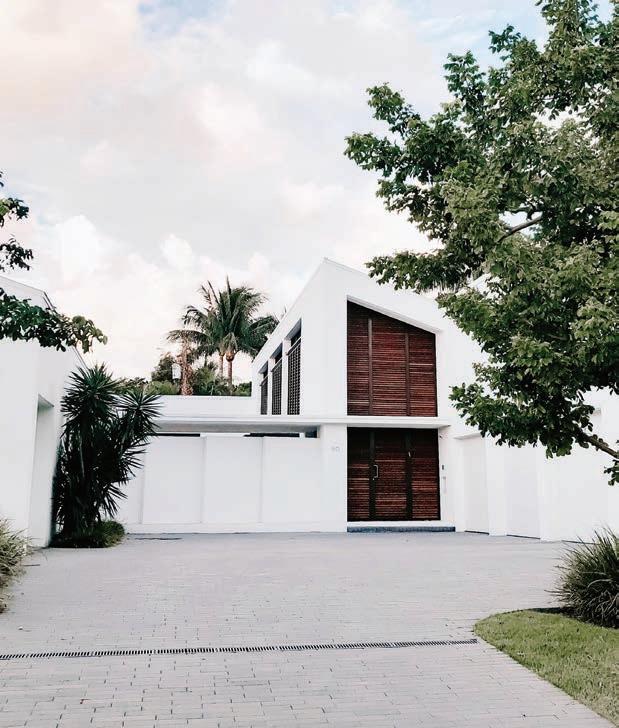
Prestige pricing could also play a role in some sellers’ hesitancy to be realistic on the value of their home. In luxury, high prices are expected – and there’s the idea that pricing lower, even slightly, could hurt sales and impact the overall view of the market. Sellers undoubtedly take this into account when pricing their properties and setting their expectations.
“An ultra-high price typically suggests ultra-high quality,” Altneu said. “It can often equate to exclusivity, too – like a one-in-a-million painting that can’t be replicated. Does it mean that painting or, in this case, property is actually worth that soaring price, though? That depends on who you ask.”
“ PRICING LUXURY PROPERTIES IS BOTH AN ART AND A SCIENCE”
PATIENCE & UNDERSTANDING THE BUYER
To be clear: The seller is not the only one to blame. Buyers see headlines of price declines and market slowdowns, and they expect that bargain-basement deals are around the corner.
That’s far from the case these days, but psychologically, this mindset can take its toll on the home shopping process.
In fact, our Vision Survey found that almost 50% of agents see buyer expectations of “significant price declines” as the single biggest barrier to home buying this year. It’s even bigger than low inventory, according to agents.
20 23 BUYING CHALL ENGES
“Those stats say a lot,” Gehringer said. “Buyers, like sellers, just haven’t caught up to reality of 2023 yet. That’s where the great agents are going to rise to the top – in educating and informing these consumers on the changing market.”
Understanding where buyers’ heads are at can help sellers better adjust their expectations, too. Most luxury buyers are purchasing out of want as opposed to need, and that offers

them some discretion in the properties they consider, particularly when the market is less frenzied. They can take their time, view dozens of properties, and really wait it out until the ideal home comes along.
As Marine summed up, “Until this pricing disconnect between buyers and sellers is resolved, seller patience is going to be critical.”
The Outsized Influence of the TOP 20%
The top segment of high-net-worth (HNW) consumers are thought to generate the majority of all luxury sales. Is it true for luxury real estate? Our analysis of 10 prime U.S. markets from New York to Los Angeles, and Aspen in between, proves that the wealthiest spenders still carry the high-end residential market, in good times and in bad.

HOW THE ULTRA WEALTHY DRIVE THE MOST DEMAND
Much has been made about the general resilience of luxury consumers in the face of economic challenges. But even more resilient is the highest tier of luxury consumer: the ultra-high-net-worth (UHNW) individual.
“Their extreme wealth has insulated them to the point that they would be the last to feel the effects of a 20% stock market correction or a 3 to 4% rise in interest rates,” said Milton Pedraza, CEO of the Luxury Institute. “They’re not immune, but they are super-resilient.”
This exotic luxury consumer tends to be very welldiversified with their investments and assets, preferring a mix of stocks, mutual funds, retirement accounts, and real estate – thus, exposing their tremendous fortunes to less risk. They likely own three or more homes, both in the U.S. and abroad. So much wealth has been created over the past two decades – especially over the course of 2020 and 2021 – that most experts expect ultrawealthy individuals to continue to flex their spending power despite economic uncertainty this year.
As Pedraza puts it: “The top 20% of wealthy consumers generate 70% of all luxury sales while the rest of the affluent consumer segment drives only about 30% of sales.” Or, in other words, the wealthiest of the wealthy will carry the overall luxury market. But is this true for real estate? And will it be the case for 2023 with all of its potential economic and geopolitical headwinds?
According to market data examined by the Institute for Luxury Home Marketing, the answer appears to be a general “yes” – with some key differences.

“ UHNW INDIVIDUALS ARE CONSIDERED TO BE THOSE WITH $30 MILLION
OR MORE IN NET WORTH”
SMALL BUT MIGHTY
Almost 90% of all HNW individuals have a net worth of $1 million to $5 million, per Wealth-X. 2 That leaves only one in every 10 of the world’s millionaire population classed as a very-high-net-worth (VHNW) individual, with a net worth between $5 million and $30 million.
Comprising an even smaller piece of that pie are UHNW individuals, or those with $30 million+ in net worth. Emerging more recently within this elite millionaire circle is a fast-growing segment Forbes has dubbed “a new class of super-rich”: the centi-millionaire, or those who have at least US$100 million in investable assets. 3
According to Wealth-X data, the U.S. had the highest percentage of UNHW individuals at 127,800 at the end
of 2022 – more than double China’s UNHW population and six times that of Germany’s. They hold more than $14,227.5 billion USD in wealth, giving them an outsized spending influence on assets such as real estate. Another study by Henley & Partners, a London-based investment migration consultancy, found that the U.S. had 9,730 centi-millionaires in 2022, accounting for 38% of the world’s total of 25,490. 4
These UHNW individuals are continuing to stay put in their favorite playgrounds – gravitating to places like New York, Los Angeles, London, as well as second home getaways like Palm Beach, the Hamptons, and Aspen. They demand absolute privacy, the highest quality, the best experiences, and the most exclusivity, especially when it comes to their real estate collections.
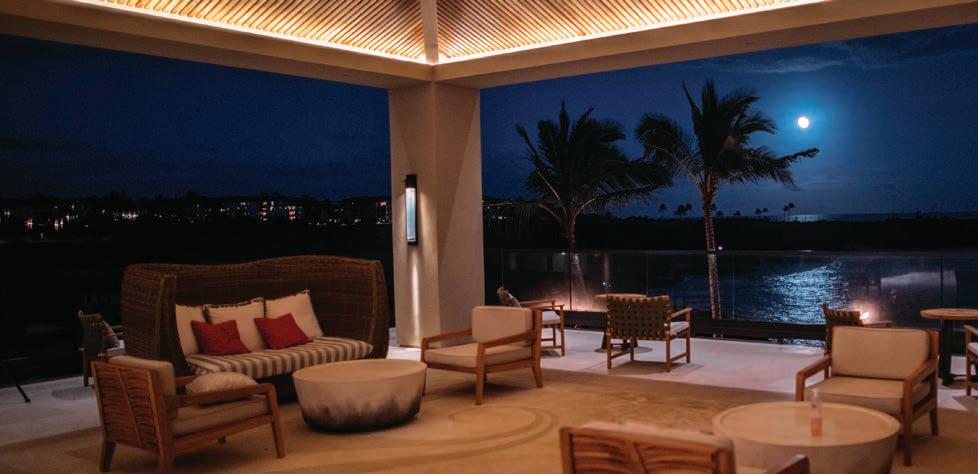
392,410
3,614,960
$41,824bn
$35,984bn
30,203,740 $56,593bn
THE CRÈME DE LA CRÈME OF LUXURY REAL ESTATE
According to the National Association of Realtors (NAR), million-dollar sales (the NAR threshold for luxury) represented on average a 6.6% of all existing U.S. home sales in 2022, climbing as high as 7.9% in May 2022.5 This is a comparatively small amount when measured against the 27.8% represented by properties priced $500,000 and above. Still, that 6.6% was roughly double what it was in 2018, which had remained consistent since at least 2016.
Million-dollar sales may comprise a small percentage of the overall U.S. housing picture, but the very top of the luxury segment does most of the heavy lifting. During our review of 10 prime markets – those markets where the ultra-wealthy tend to own property, the top 20% represented about half of all luxury home sales in the last four months of 2022 on average.
Most dramatic was the tony Palm Beach area, where the top 20% represented almost 80% of all luxury home
sales in 2022 – where the entry threshold price for luxury properties started at $1,460,000. Meanwhile the top 20% in Aspen – home to “Billionaire Mountain” – only represented 48% of all luxury home sales in 2022, but the price threshold was much higher at $23,500,000.
When you look at dollar volume, you see that the top 20% of the market in these destinations carries the local luxury sector. For example, the coastal communities of Connecticut – which include Greenwich, Darien, Westport, and Southport – ended 2022 with $4.9 billion in sales for the top 20% of the high-end market and that was more than half of all luxury home sales. But it’s the luxury capital of the world – New York – that shines when you look at the top 20% of luxury home sales. These sales alone in the Big Apple – generally anything over $4.3 million – drove a whopping $19 billion, per UrbanDigs, of the $33.5 billion in total sales volume for all 10 markets we reviewed, controlling about half of the entire local NYC luxury home market.
LEADING THE WAY FORWARD
The 2023 luxury real estate story is still an open chapter waiting to be written.
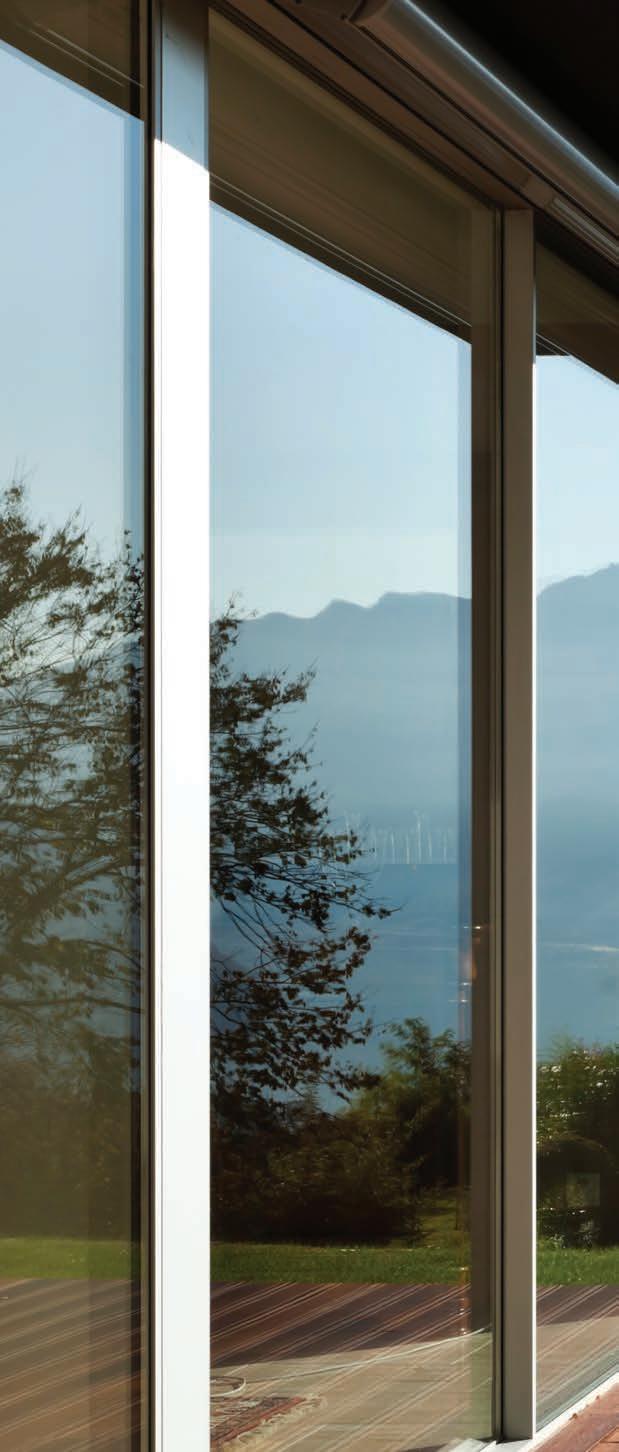
Even if a true slowdown does occur, it is important to remember that the continued strength of the overall market is likely be driven by the powerful players at the very top. Lessons learned from past downturns support this view: the ultra-wealthy tend to lead. And so far, today’s wealthiest individuals appear to be leading by living well.
“There’s been a cultural shift after the pandemic and the ultra-wealthy feel less guilty about spending their money if it means they can have experiences to share with their families and friends,” said David Marine, Chief Marketing Officer of Coldwell Banker Real Estate, LLC. “It could mean more travel this year, but it could also mean a home in a new place. A home fulfills a few needs for them – financial, personal enjoyment, wellness, security.”

Market Misconceptions DEBUNKED
Conflicting economic signals. Sensational media headlines. If you’re confused about how to read the tea leaves of the latest real estate data, you’re not alone. Here are three of the most common misconceptions about pricing, inventory, and sales numbers, and why reality may be better than perception for the luxury home market this year.

MISCONCEPTION ONE
“Prices are falling so my home is worth significantly less today than it was last year.”
As buyers adjusted to higher borrowing rates, economic uncertainty in 2022 and declining numbers of sales, much talk has centered around the idea that prices would eventually start to fall too.
In comparing the median sold price for luxury homes across 125 markets from December 2021 to December 2022, the prices actually shot up by 106.5%! There has been a small price correction of 3.5% when comparing December 2022 against June 2022, which recorded the highest median sold price during 2022.
During this time period, some markets reported a 10% to 12% price decrease while others reported price growth in double digits. With numbers like that, how do you determine if your property’s value is really falling or not?

THE REALITY
Using a single parameter like median sold prices to prove property value declines is not telling the whole story, especially if you are comparing the volatile 12 months of 2022 against 2021. You need to understand the influence of inventory, especially new inventory, as well as the change in demand.
How 2022 Demand Changes Impacted Price
One of the key parameters that must be factored into your understanding of price drops in a changing market is how a shift in demand can distort the perception of median price.
Part of what is driving down the median sales price currently is that there are now more sales for lower-priced luxury homes. Reasons for this include higher interest rates eating into buyers’ affordability, the resurgence of cities where properties tend to be smaller, people don’t need as much space as they did during the height of the pandemic, and rising demand for multiple homes, which tend to be smaller. SP/LP% is a far more telling metric.
CHANGES IN DEMAND
LAST YEAR VS.
Luxury mansions and estates with higher price tags were in demand
Buyers were paying over asking price
A severe lack of inventory was driving up home prices
Prices were less of a factor because interest rates were low
THIS YEAR
Homes with smaller footprints (and price tags) are in demand
wary of over-
Buyers are warier of overextending themselves
Inventory is still low, but there is less new inventory entering the market
Prices are more important because interest rates are substantially higher
Inside the Numbers
We reviewed the data for single-family homes in just four very different U.S. luxury home markets to demonstrate. When you look at overall luxury home prices from the first quarter to the fourth quarter of 2022 in some of these locations, it looks like prices have decreased dramatically.
Take Maui as an example. Prices for luxury homes dropped from about $4.5 million in the first quarter to $3.9 million in the last quarter. When you look at the SP/LP%, it was at 89%, suggesting that price negotiations were happening. However, when you look at home prices in the $1-2 million and $2-3 million categories, prices have
stayed relatively stable and even notched up a little in the $2-3 million range. The SP/LP% was close to 100% for the $1-2 million range, and 102.2% for the $2-3 million range, which shows strength in these price segments.
Bottom Line
To get a more accurate picture of the value of properties in your market, it is much more helpful to compare home sales by price band rather than using the whole market, and not be influenced by properties that have been on the market a long time and probably would have been overpriced even in the seller’s market of 2021!
MISCONCEPTION TWO
“Inventory levels are rising; therefore, I will be able to find my dream home at the price I want.”
Buyers have recently been encouraged by media narratives that inventory levels were finally up in 2022. But when they went house shopping and still struggled to find properties that met their criteria, they were rightly confounded. If inventory was increasing, then why couldn’t they find the home they wanted?
THE REALITY
From May 2020 through May 2022, the level of luxury home inventory dropped month over month, on average. By May 2022, there was an upswing and buyers began to see relief in what was a very dark tunnel of “chasing the market.” But this upswing in inventory, together with the Federal Reserve announcing its plan to continue increasing interest rates, was countered by a dearth of sales. After which, new inventory entering the market declined in the last six months of 2022 compared to the second quarter of 2022 – likely due to seller hesitancy. Inventory levels did seemingly continue to rise, so what was the reason behind this disparity?
Why a Desirable Home is Still Hard to Find
Our Opportunity Index stats show that active listings rose in 112 markets out of 125, but 100 markets saw a comparative decrease in the number of new listings from the last four months of 2022 compared to the first eight months.
There are a few reasons for this anomaly. First, supply levels increased because inventory stayed on the market and stale inventory accumulated. The inventory that remained on the market did not meet the criteria of buyers, for whatever reason, whether it be price, home condition or quality, size, location, or all of the above.
This was compounded by sellers who were not willing to budge on price and let their listings languish on the market. As we can see from the chart in July, new sellers started to hesitate, as they feared higher interest rates or the prospect of not being able to find a replacement property. This, in turn, created a lack of new inventory. The self-inflicted cycle continued.
Properties that did come onto the market, were priced correctly, and checked all of the desirability boxes (such as move-in ready, amenities, privacy, and views), still sold in record times and often, for full asking price.
INVENTORY LEVELS 2022
Inside the Numbers
Several markets show these conflicting dynamics at play when we compare the last four months of 2022 against the first eight months of 2022. In Central Connecticut, active listings only increased by 17.6% yet new inventory decreased by more than 24%, which resulted in an SP/ LP% of just over 100%, suggesting that sellers here were often achieving their price and even a little above it. More dramatically, Portland recorded a nearly 47% increase
in active listings, but a 23% decrease in new inventory, resulting in an average 99.2 SP/LP%.
Bottom Line
To get a more accurate picture of the opportunities created by rising or falling inventory levels and improve your standing during price negotiations, it is important to understand the general makeup of available inventory in your particular price point in your local market area.
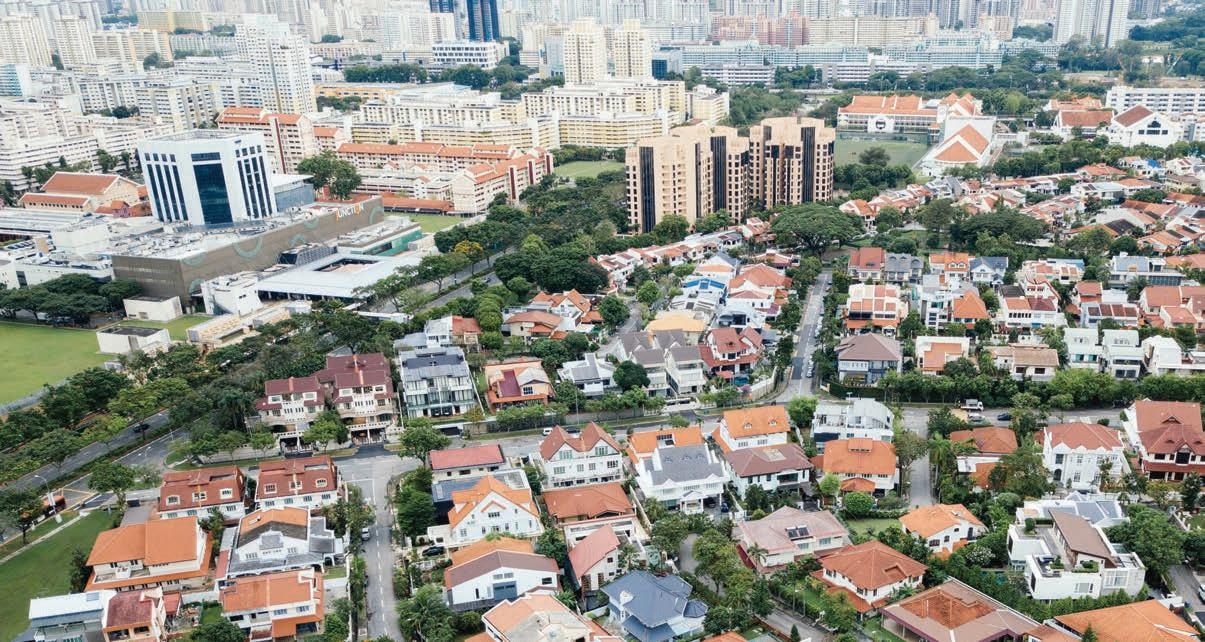
MISCONCEPTION THREE
“Declining sales are a harbinger of a housing market crash.”

While it’s true that sales in the final quarter of 2022 were down compared to 2021, you have to remember that 2021 was also one of the hottest real estate markets on record. Sales also only show one angle of a much more complex data view.
THE REALITY
It takes more than just declining sales to make a real estate crash. More likely, slowing sales are likely a symptom of a housing market that’s coming off of a two-year pandemic-influenced buying high and settling into a pace that’s more in line with historical norms as we can see when comparing sales in 2019 vs 2022.
Other economic factors, too, would likely need to be present, such as high unemployment. So far, the 2023 jobs market is off to a strong start, posting its biggest gain in January since July 2022.6 Mortgage rates have also started to come down, which could spur more activity in the housing market just in time for the normally busy spring buying season.
Number of Sales
Median Sold Price
Sales by Volume
65,635 $1,490,000 $106,085,672,101
63,257 $2,090,000 $143,465,816,034
Difference
Crash or Correction?
Another “c” word may be a more apt description for the current real estate landscape: Correction.
Buyers are in the process of adjusting to a new reality, where mortgage rates are roughly double what they were in 2020 and 2021 when rates plummeted below 3%. 7 Historically speaking, a 6% rate is still low, as anyone who purchased a home during the 1980s and ’90s will tell you.8 But for much of the last decade, the reference point for mortgage rates has hovered around 4%. So when rates jumped to 7% in October 2022, it was a shock to the system. Understandably, wealthy individuals took a breather to reassess their homebuying plans.
Eventually, affluent buyers (and sellers too, if they are letting go of a lower rate on their current home) will adapt
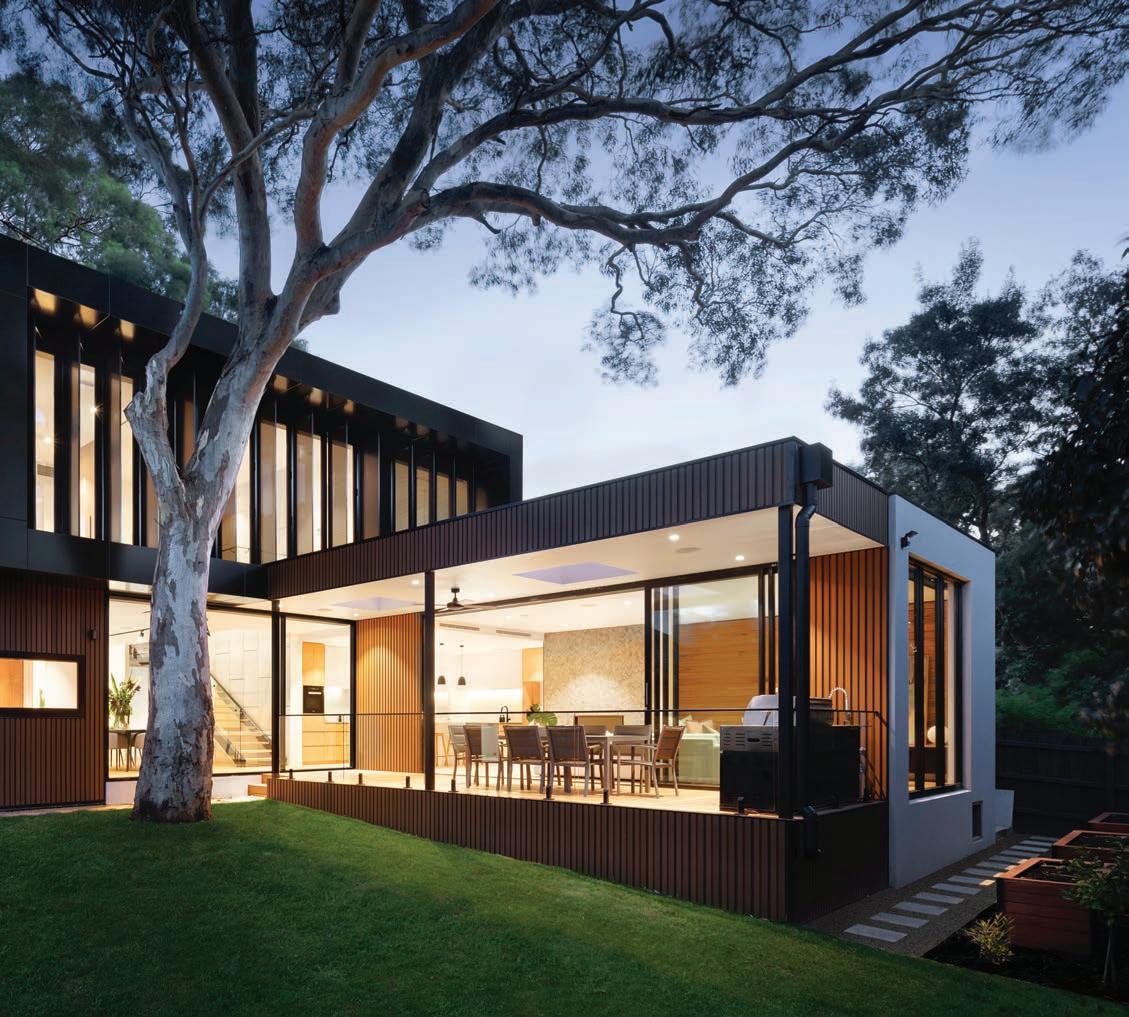
to a higher reference point, as they always do. Some experts even expect millennials – now the nation’s largest living adult generation – to keep demand steady as they build up their wealth portfolios and age into their prime homebuying years.
Terms like “down market” and “buyer’s market” tend to get conflated during housing market corrections, but they are not the same thing. It’s not clear that either description accurately describes the 2023 luxury residential landscape. Take, for example, the question of whether we are in a buyer’s market. It largely depends on the unique supply and demand of a local area. The market as of December 2022 saw a huge swing in both directions with 58 of the 125 markets researched registering as seller markets, 26 were balanced, and 45 were favorable to buyers.
Inside the Numbers
Take Denver, Seattle, Boston, and East Bay in Northern California, for example. Conditions in these markets for single-family homes generally still favor sellers right now. Meanwhile, in places like Miami, Park City, Maui, and Reno (markets that experienced major buying booms during the pandemic), conditions are friendlier to buyers. But even then, that’s not the entire picture, as we have seen the pendulum swing in opposite directions over as little as a single month.
What is more likely happening now in many locations across the country is an equalizing for both buyers and sellers. As Danielle Hale, Realtor.com ® Chief Economist
noted: “The 2023 housing market could become a ‘nobody’s market,’ not friendly to buyers nor to sellers.” 9

Bottom Line
For the level of sales to increase in 2023 and beyond, there would need to be an adjustment in both seller and buyer attitudes towards pricing – but this doesn’t mean that prices have to come down. Instead, they need to understand the demand for properties in their market and adjust accordingly to secure a sale.
S ELLER MARKETS - DEC 2022

What global cities are on the minds of high-net-worth (HNW) individuals this year? What’s driving their international purchases, and will metaverse real estate be the next big strategy for diversification? We turned to Wealth-X to get a view of luxury real estate on a global scale this year.

Wealth and Population OVERVIEW
The past few years have been particularly unique ones for the world’s economies, peppered with soaring highs and surprising lows, much of it due to the lockdowns of the COVID-19 pandemic and geopolitical tensions. Inflation, rising interest rates, and volatility in stock markets have also injected some uncertainty into the global wealth picture. But as we ease into 2023, conditions are starting to normalize again – with less volatility and an overall more consistent outlook on the horizon.
“ EXPECT INCONSISTENCIES TO REVEAL DIFFERING SETS OF PRIORITIES AND VALUES IN 2023.”
In 2021, the number of consumers with $5 million+ in net worth hit a record high of 4.2 million, according to Wealth-X. Data from Credit Suisse also shows wealth made its biggest jump ever that year – climbing nearly 13%.1
Though 2022 saw a slip to four million from these soaring figures, the number of wealthy individuals worldwide is still up considerably over 2020. The numbers have also improved compared to mid-2022, when worldwide wealth dipped by 6.4% (again, compared to historic highs).
Things are likely to continue on this upswing as we move into 2023 and beyond. In fact, Credit Suisse estimates that the number of worldwide millionaires will surge by 40% by 2026 – a mere three years down the road. By that point, an estimated one in seven adults will have a net worth of at least $1 million.


“ LESS VOLA TILITY AND A MORE CONSISTENT OUTLOOK IS ON THE HORIZON FOR 2023.”
THE IMPACT OF THE U. S. DOLLAR
It’s also worth noting that this wealth is measured in U.S. dollars, which have grown significantly in value over recent years. This skews the wealth numbers a bit, particularly where the USD-to-local-currency exchange rate has dropped.
The USD/GBP rate, for example, fell 10% in 2022, making for a significant decline in USD-measured wealth in the U.K. The same goes for Japan. With a nearly 15% decline in the exchange rate between USD and JPY (Japanese Yen), the number of residents meeting our $5 million USD threshold dropped considerably.
The impact of wealth measured in other currencies may have had an alternate effect, even increasing the number of wealthy individuals in some cases.
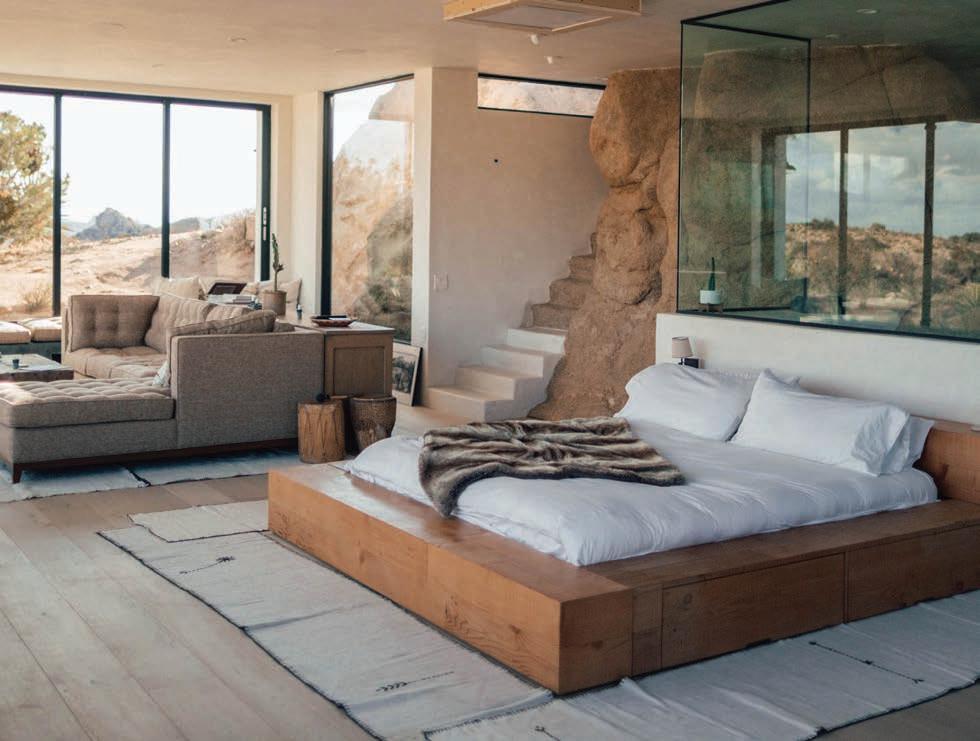
“ONE IN SEVEN ADULTS WILL HAVE A NET WORTH OF AT LEAST $1 MILLION BY 2026.”
FACTORS TO WATCH IN GLOBAL WEALTH
There are many factors that will influence global wealth trends this year, and these will vary quite a bit from one region to the next. Overall, though, experts project global economic growth around 1.7% this year and 2.7% by 2024, according to the World Bank. 2 They’re not huge numbers, but it’s growth nonetheless – and a good indicator of the general strength of the world’s economies. In some places, the possibility of a recession looms –primarily in the U.K. and other Euro-based countries. Inflation, geopolitical conflicts like the war in Ukraine, higher interest rates, and stock market volatility could also play a role in where wealth heads worldwide this year.
Fortunately, many of these concerns only further drive consumers toward real estate purchases – especially at the high end of the market.
HNW individuals are known to be in tune with market fluctuations, and they tend to move their wealth strategically when economic challenges persist. Since real estate has long been considered a strong hedge against inflation and a smart way to diversify one’s overall investment portfolio, we can largely expect the world’s affluent to turn toward property investments as a way to preserve their long-term wealth in uncertain times.
In fact, according to Coldwell Banker Global Luxury’s The Trend Report 2022, about 40% of those with a net worth of $1 million+ plan to purchase a property in the next one to three years.
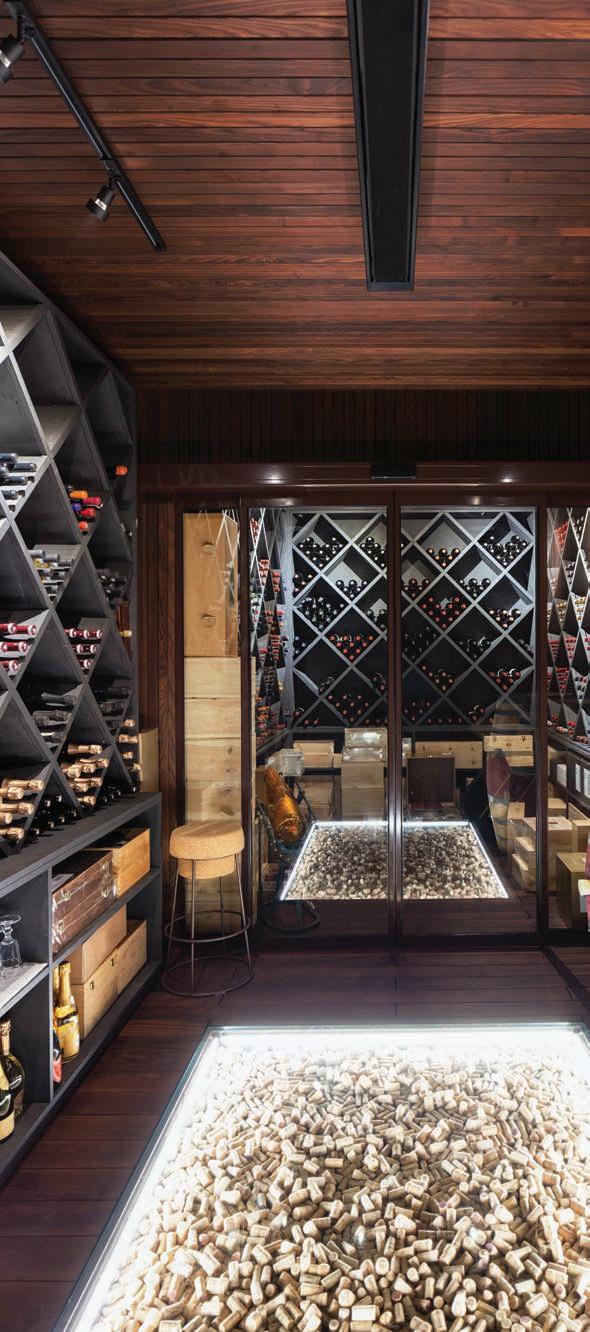
“ THE WORLD’S AFFLUENT WILL TURN TOWARD PROPERTY INVESTMENT AS A WAY TO PRESERVE THEIR LONG-TERM WEALTH.”
THE POWER IN POPULATION SHIFTS
Changes to worldwide populations and demographics will trickle down to real estate in big ways this year, too. For one, the number of worldwide millionaires is now at its highest point in history, and by 2026, there will be around 1.6 million individuals with a $1 million net worth or higher.3 Most of those will be concentrated in the U.S., China, Japan, the U.K., France, Germany, and Canada.
In the ultra-high-net-worth (UHNW) category, which Credit Suisse defines as $50 million in net worth or above, the Zurich-based bank estimates there will be nearly 400,000 worldwide by 2026. It can be assumed that many of these new ultra-wealthy consumers will be of younger generations. In the U.S. and Canada, millennials and Generation Xers have grown their wealth the most over the last three years, notching increases of about 25% (U.S.) and 19% (Canada) compared to the 7% to 11% uptick seen by all generations as a whole.
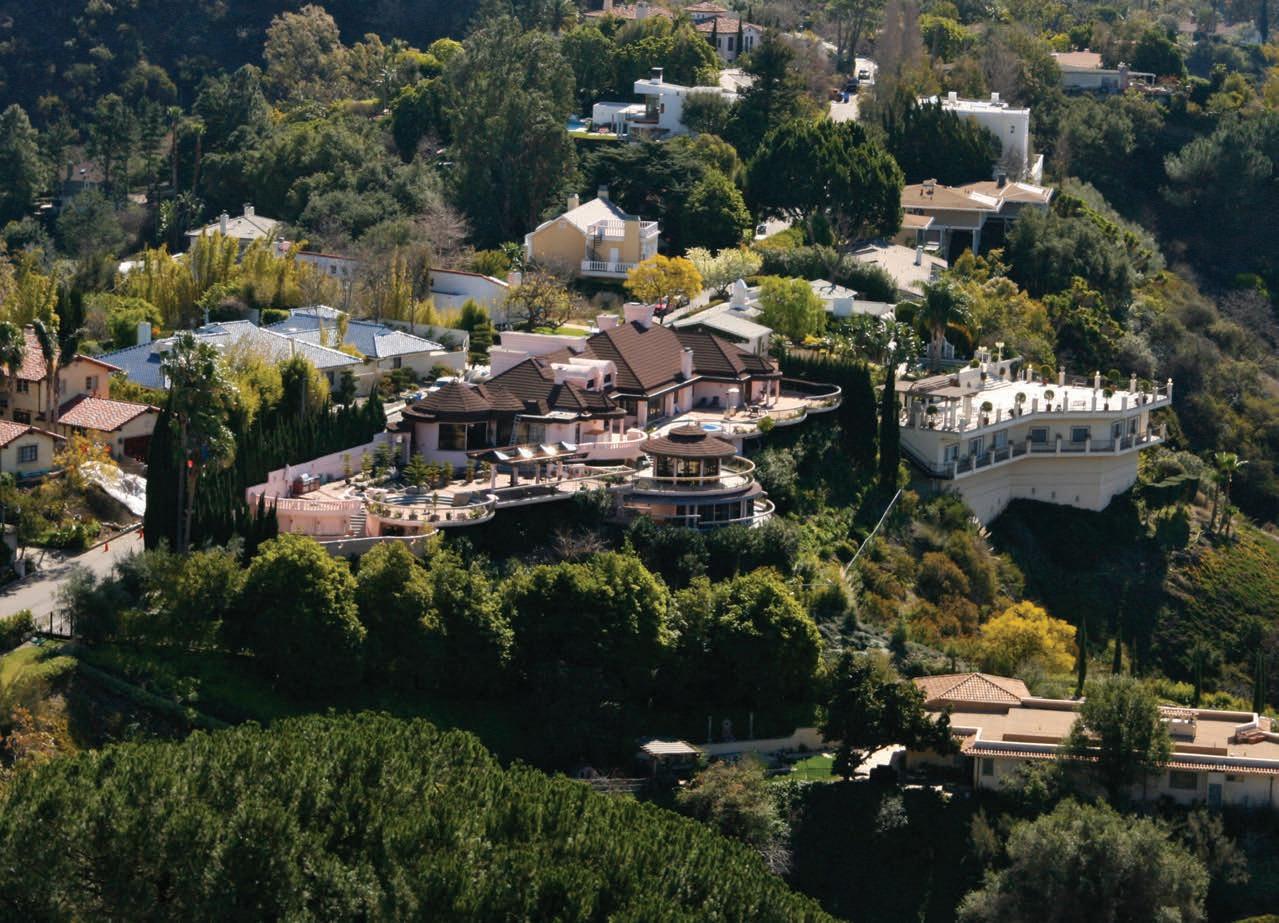
“
BY 2026, MILLIONAIRES WILL TOTAL 1.6 MILLION AND THOSE WITH $50 MILLION+ WILL TOTAL NEARLY 400,000 WORLDWIDE”
If these trends continue, younger consumers will wield more and more power in the real estate community, particularly given their propensity for property investments.
According to the 2022 Bank of America Private Bank Study of Wealthy Americans, affluent consumers aged 21 to 42 allocate a mere 25% of their portfolios to stocks and are significantly more likely to invest in alternative investments – real estate included. 4 For investors 43 and older? Stocks make up more than half of their portfolios and alternative investments, a mere 5%.
Younger cohorts are also highly likely to purchase abroad. In 2021, the 25-to-34-year-old group came in last in terms of international real estate interest. By 2022, they moved up to second, with only 55-and-up consumers coming in ahead.
OPPORTUNITY PRESENTS ITSELF
Home equity levels have surged over the past few years and should give existing property owners serious cash to work with in 2023. Strategic investors may decide to put that cash toward secondary homes, pieds-a-terre, and vacation properties in international markets – particularly if they’re facing inflation and economic uncertainty at home.
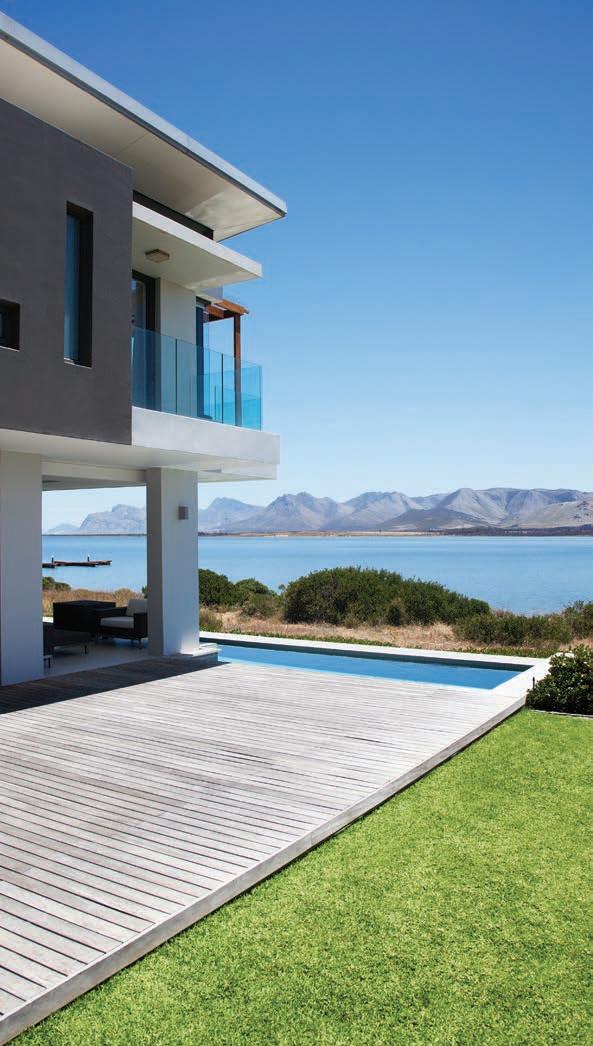
There is also relative strength of the U.S. dollar that opens many doors. With the value of US$ up over 14% compared to some currencies, many affluent consumers whose wealth is in US$ or other strong currencies may see the wealth-building opportunity that global investments present – as well as the increased buying power and notable discounts they’ll find on the ground abroad.
Finally, the changing lifestyles that have emerged out of the COVID-19 pandemic also present more buying opportunities for many HNW individuals. This is particularly true for those who enjoy work-from-home arrangements – even partial ones – as this lends itself to a more geographically flexible investment strategy overall.
INVESTMENT TRENDS
Ages: 43+
Where the Affluent Own PRIMARY RESIDENCES GLOBALLY
For the world’s affluent, the primary residence is both a commodity and a luxury they can enjoy with family and friends. HNW buyers want properties that provide security, safety, and comfort, sure, but they also consider the value of the investment – both personally and in the financial sense.
For those who have the funds to live anywhere they please, which cities offer this mix of both practicality and appeal? And how have those trends changed over time? We turned to Wealth-X to uncover the top places where HNW individuals establish their primary residencies.

U.S. REIGNS SUPREME
The world’s wealthy gravitate toward major hubs of business, finance, and culture – both globally and on a local scale. When looking at the globe as a whole, it is U.S. cities of this type that dominate the list – New York, Los Angeles, San Francisco, and Chicago, just to name a few.
What’s particularly interesting is that New York beats out every other international city — and by quite the landslide. The Big Apple has a whopping 45,849 more HNW individuals than the No. 2 spot, London, UK. It’s more than Nos. 8, 9, and 10 combined.

Surprisingly, it’s not just the city’s many amenities that are drawing in the wealthy. Compared to other international
hotspots, it actually offers quite the bargain. According to data from the National Association of Realtors, NYC properties are priced around $17,000 per square meter.5 Hong Kong’s are $28,000 and London’s top $26,000. When you throw in the city’s position as a luxury mainstay and the status and prestige that comes with an NYC abode, it’s easy to see the appeal.
It’s also unique to see San Francisco and Los Angeles beat out so many global hubs, and by so much. Again, this may have something to do with the relative value offered by these California cities compared to more international spots. San Francisco buyers pay just $8,250 per square meter, while LA’s prices are nearly half that.
T OP 10 M ARKETS FOR PRIMARY - HOME OWNE RS
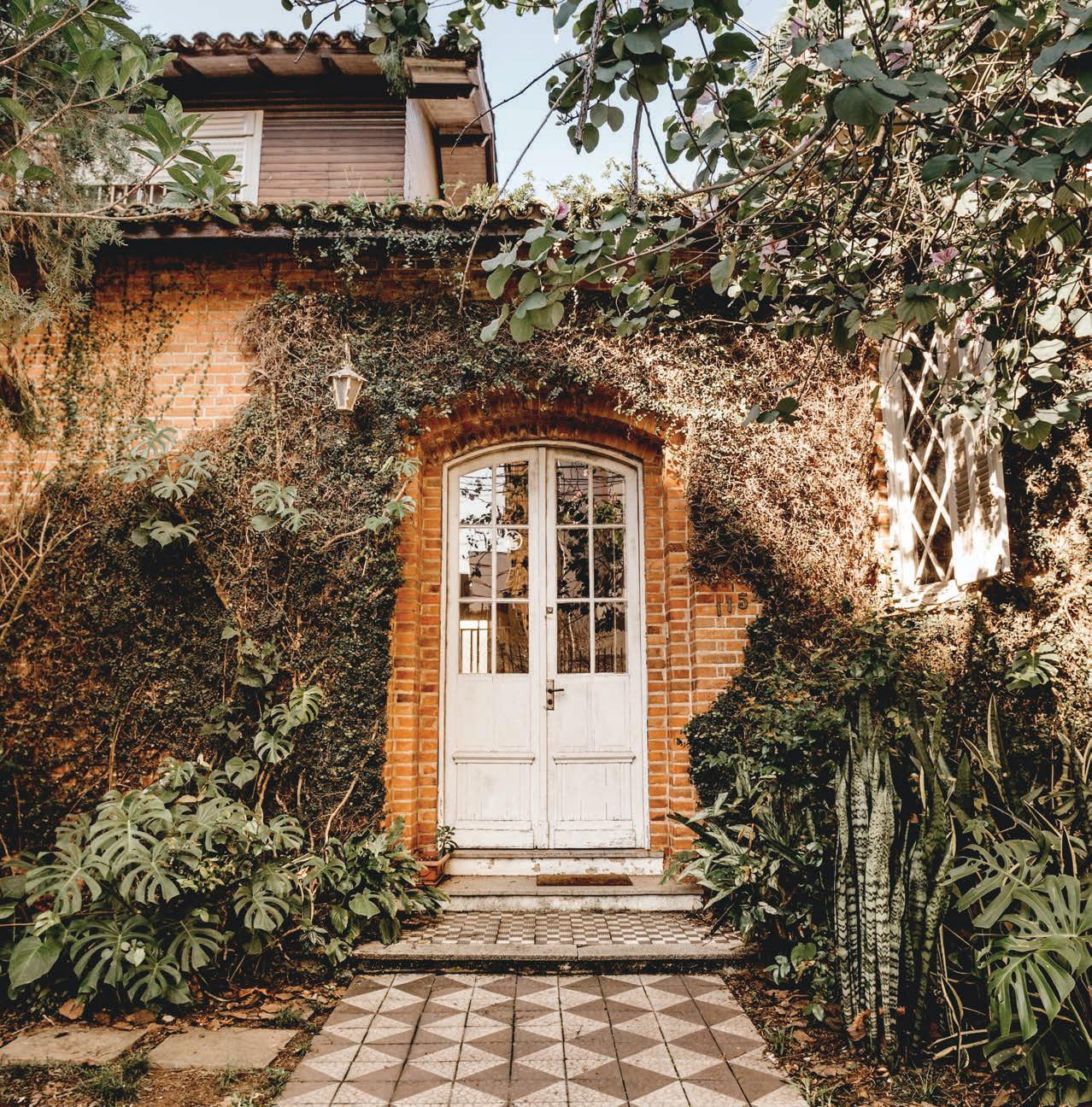
“ THE WORLD’S WEALTHY GRAVITATE TOWARD MAJOR HUBS OF BUSINESS, FINANCE, AND CULTURE”
BIG NON-U.S. CITY STRONGHOLDS
If we filter out U.S. cities, the picture changes. Instead, European cities take the crown, accounting for five of the top 10 cities for HNW primary-home owners. London alone claims nearly than 53,000 individuals with a $5 million+ net worth.

It’s important to note that these lists also reflect a cultural bias. In many countries, owning a primary residence simply isn’t the norm – nor the goal – for most residents. Japan, Switzerland,6 and Germany,7 where over half their population are renters, are prime examples. If we were to call out the cities that simply have the most residents with a high net worth, the list would likely, again, look quite different from the other iterations seen above.
Still, it’s clear from the rankings that HNW buyers put much stock in large, bustling cities and urban metropolises, seeking access to both the business communities located in these areas, as well as the culture and wide array of amenities they have to offer.
Guangzhou, China Berlin, Germany Munich, Germany Hamburg, Germany
THE ASIAN COMEBACK
Changes to COVID policies – or, more specifically, the easing of many restrictions associated with the pandemic – are trickling down, too.
Last year, only two Asian cities made the Wealth-X top 10 list. Now that borders have opened and travel bans have lifted in many locations across Asia, Singapore, and two Chinese cities – Beijing and Guangzhou – have re-emerged on the list of top 10 international spots for primary-home owners in 2022.
Singapore 8 is particularly interesting, as it rocketed to the top of the list this year, likely due to strong incomes, low labor shortages, and tight inventory levels as well as the high levels of foreign investment going into the country known as the “Gateway to the East.” As long as borders remain open, HNW individuals' interest in Beijing, Guangzhou, Shanghai, and other Chinese metropolises – will likely remain elevated for the foreseeable future.

RANKING CHANGES FOR PRIMARY - HOME OW N ERSHIP
TRIED AND TRUE INVESTMENT MARKETS
One thing that’s notable from the 2022 list is that traditional centers of wealth – London and Paris – have not lost their luster for HNW individuals, who typically have a long-term view on real estate when it comes to wealth building. Typically, these are destinations with strong financial centers and cultural pursuits, where real estate tends to hold its value over the long haul.
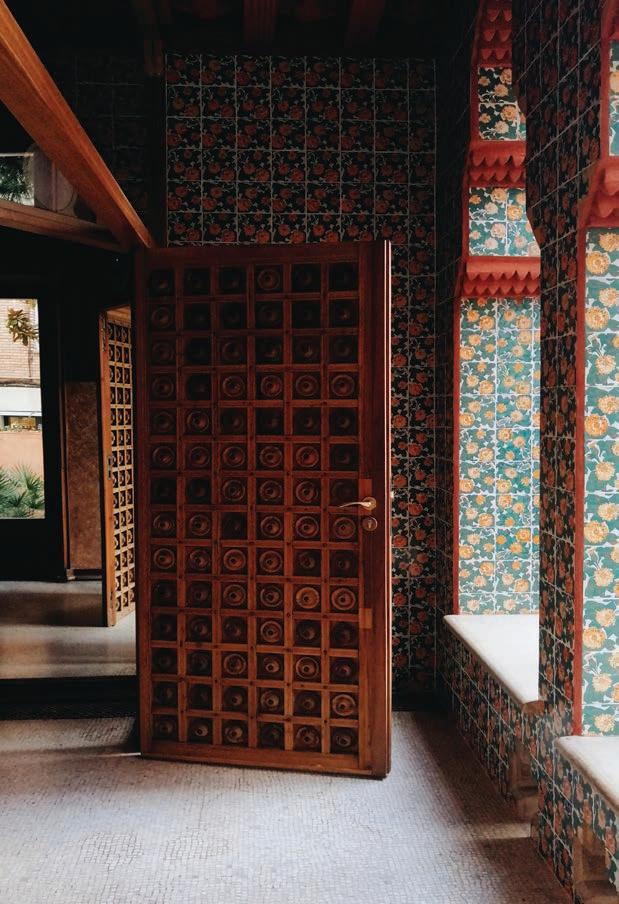
With stock markets on uncertain footing, investors could prioritize real estate as a long-term approach to wealthbuilding. Inflation could also push the world’s wealthy towards real estate as they look for strategic ways to hedge their portfolios and preserve their wealth.

MORE BANG FOR LESS BUCK
Many of the global cities in the top 10 for primary-home ownership have seen home prices level off or even decline in recent months. London 9 home prices, for example, dipped by 3.2% below August 2022’s peak and Toronto10 home prices have sunk 9% since December 2021.
These price trends not only afford HNW buyers the opportunity to buy more house for less money, but they also help offset the rising costs that property ownership now comes with – largely due to increasing fuel, water, and electricity prices. (Japan’s TEPCO power company announced plans to raise electric prices by almost 30%.)11
Where the Affluent Own SECONDARY HOMES GLOBALLY
HNW consumers rarely own just one property. Among individuals with net worth of $5 million+, Wealth-X data shows that nearly 14% of all global wealth is put toward real estate and other luxury assets, indicating a high number of secondary homes and vacation properties are likely in the mix.
In fact, according to a recent Coldwell Banker Global Luxury survey of affluent international buyers, 84% of respondents said they own residential real estate outside of their home country. These countries include Italy (90%), Turkey (87%), Costa Rica (87%), the U.K. (86%), France

(85%), the U.A.E. (84%), Spain (84%), and Canada (83%). Where will those properties be located, and more importantly, how do those lists compare to the secondaryhome hotspots of 2021? Here’s what we found.
When the U.S. is included, New York once again takes the crown for the most HNW secondary-home owners globally. Four other U.S. cities earned a place on the list, including Los Angeles, Miami, San Francisco, and Washington, D.C., for a total of 290,000 secondary-home owners – more than all of international cities combined, from Beijing to Geneva. New York alone is home to more than 95,000.

If we zoom out globally and exclude U.S. cities, Asia emerges as a major center for secondary-home ownership. Beijing surged to the top of the list after only taking the sixth spot in 2021. Singapore moved to the third spot, followed by Hong Kong, which took the fourth position ahead of Geneva.
Affluent buyers are also gravitating toward Sydney. While the popular European playground of Geneva made the list in 2021, its fellow Swiss city Zurich joined the top 10 this time around. Combined with Paris, London, and Munich, that makes for five European cities across the list.
T OP 10 NON-U.S. MARK ETS FOR SECOND AR Y- HOME OWNERS
Beijing, China
London, UK
Singapore

Hong Kong, China
Geneva, Switzerland
Paris, France
Sydney, Australia
Munich, Germany
Toronto, Canada
Zurich, Switzerland
16,418
14,827
14,320
10,131
9,678
*Number of individuals with a net worth of $5 million+. Ranking excludes U.S. markets
Source: Wealth-X, an Altrata company
RANKING CHANGES FOR SECOND ARY - HO ME OW N ERSHIP
*For individuals with a net worth of $5 million+. Ranking excludes U.S. markets.
Source: Wealth-X, an Altrata company

Top Trends Driving Global HNW

SECONDARY-HOME OWNERSHIP IN 2023
The list of top secondary-home spots has changed quite a bit over just a one-year period. There are many factors driving this evolution, but we zeroed in on three big ones that appear to be most influential in affluent consumers’ decisions.
1. INCREASED TRAVEL AND THE GROWING POPULARITY OF SECOND CITIZENSHIPS
As distance continues to grow from the early days of the pandemic, more consumers are willing to travel – and, in this case, buy properties abroad. Part of this is due to easing COVID-19 restrictions and reopening borders (hence the increased activity in Asia this past year), and part is due to economic and political factors.
Just look at the number of wealthy Americans applying for second passports. As Business Insider put it, “The number of wealthy Americans applying for citizenship or residency in foreign countries has skyrocketed over the past three years as U.S. billionaires, tech entrepreneurs, and celebrities look to create a plan B for their families.”12 One firm that guides HNW investors through passport processes says it has seen a 300% jump in interest from Americans alone.
For those that choose this approach, many are opting for places very different from their home countries – like Switzerland, which is widely known for its strong education and healthcare systems – or international urban centers, where business, culture, and amenities converge.
2. THE INFLUENCE OF TAXES
Taxation is clearly top of mind for HNW individuals, too. Take Paris and Toronto, which both increased taxes on secondary homes and foreign home purchases in recent years. (Toronto’s tax on foreign nationals is now 25%!)13 As a result, both cities slipped in our rankings for HNW secondary-home owners.
Switzerland, on the other hand, is well-known for its favorable tax policies – particularly for the wealthy. Mortgage loans in the country are even tax-deductible. This might explain why two Swiss cities made this list this year. After all, at a time when inflation and consumer prices are rising, every dollar counts.
Back in the U.S., Los Angeles has a mansion tax set to take effect in April. It will be interesting to see how that influences HNW purchases there later in the year.
3. THE CHINA EFFECT
China has the second-most UHNW individuals in the world and 10% of all millionaires, per Credit Suisse.14 These consumers tend to gravitate to neighboring Asian regions when buying real estate – a probable explanation for the rise in secondary home purchases in Singapore and Hong Kong over the last year.
According to Forbes, mainland China buyers accounted for 42% of all condos sold to overseas buyers in Singapore between January and August 2022. 15
Experts predict even more activity in the coming months as China lifts its Hong Kong border restrictions. In January 2023, Chinese borrowers represented more than 11% of all mortgage requests in Hong Kong. 16
“ AMERICANS APPLYING FOR CITIZENSHIP OR RESIDENCY IN FOREIGN COUNTRIES HAS SKYROCKETED”
Where Affluent Americans ARE BUYING ABROAD
The wealthiest U.S. citizens are showing significant interest in overseas home purchases. In 2022, more than 64,000 overseas properties were owned by U.S. consumers with $5 million+ in net worth. That’s up 20% from 2021 and a whopping 115% over 2020.
*For individuals with a net worth of $5 million+.

This trend only seems to be growing. Per the 2023 Coldwell Banker Global Luxury survey of international affluent buyers, over 91% of U.S. respondents said they are most likely to own residential real estate outside of their home country. Where might they be making these purchases, though, and what can we expect from U.S. buyers in 2023? Here’s the data.

THE DOLLAR’S POWER DRIVE PURCHASES
Europe and Asia claim all the top international spots for Americans. One big contributing factor is the strength of the U.S. dollar, combined with the simultaneous downtrend of other currencies, like the Great British Pound (GBP) and Yen.
In the former case, the Pound is down 10% compared to the dollar, according to Wealth-X data, giving U.S. buyers a notable bump in buying power in the region. The dollar is also very strong compared to the Euro, which is used in France (No. 5). This is largely due to the economic impact of the war in Ukraine, which has inflation soaring in neighboring countries.
These disparities in currency afford U.S. buyers serious buying power and valuable discounts, which can free up cash for furnishing the properties they purchase or for remodeling, in many cases. They’re also particularly valuable given the state of U.S. home prices, which currently sit near all-time highs.
INCENTIVES MATTER
Some of these countries also offer incentives to foreign buyers. In France, for example, Americans can purchase properties using in-country financing.

This is a huge perk considering the ultra-low interest rates the French enjoy these days.17 As of January, typical rates on 15- and 20-year loans in the country were well below 3%. Meanwhile, U.S. mortgage rates are above 6%.
Golden Passport schemes are another incentive that has caught the eyes of HNW individuals. With Switzerland’s scheme, investors need only to pay $250,000 Swiss Francs (about $271,000 USD) to the canton they plan to reside in to get a Visa. 18
A LOOK AHEAD
It’s important to note that these are the places where HNW individuals currently own secondary homes – not necessarily the ones they’re looking to expand into as the year moves on.
See the 2022 The Trend Report for proof. We found emerging markets like Belize, Costa Rica, Honduras, and Panama are gaining ground with affluent buyers. In fact, 23% of those considering a purchase abroad are looking to Central America. Purchases in Mexico, Canada, and other non-U.S. areas of North America came in second, followed by Europe.
The reasons behind this are many, including the value these countries offer compared to U.S. home prices, and the economic uncertainty that exists at home. Some HNW Americans may be looking to branch out to other parts of the world to ensure a more stable and secure longterm investment.
Finally, the affluents’ penchant for exclusivity plays a role as well. With so many large cities growing in popularity, many are looking to invest in more unique spots, where they might enjoy a more private and exclusory experience.
“ EMERGING MARKETS IN CENTRAL AMERICA ARE GAINING GROUND WITH AFFLUENT BUYERS”

Metaverse Real Estate & Other GLOBAL DIGITAL TRENDS

Though the metaverse is still largely in its infancy, many are betting big that it will explode in decades to come. (Facebook’s parent company even staked its name on it).
For proof, just look at the sheer amount of metaverse real estate purchased last year. As of November, nearly $2 billion in metaverse land had been snapped up over the past 12 months. In 2021, $501 million was spent there. 19
Those are big numbers for what essentially amounts to a few lines of computer code –but clearly, investors have their sights set on long-term returns. In fact, a parcel of land in Decentraland 20 – one of the top metaverse platforms – was just $20 in 2017, when the first auction was held. Now, parcels are going for around $4,000 apiece. In the long term, one tech executive thinks it will be “a multitrillion-dollar opportunity.”
“ NEARLY $2 BILLION IN METAVERSE LAND HAD BEEN SNAPPED UP OVER THE PAST 12 MONTHS.”
HOW IT WORKS
Buying metaverse real estate works much like purchasing an NFT. Using cryptocurrency, you purchase a plot of land or property online, and once finalized, receive a piece of blockchain code as your deed.
There are several “worlds” to purchase metaverse real estate in, with Decentraland and The Sandbox being two of the most popular options.
After you’ve bought land in the metaverse, you can build on it, lease it out, and even host events in the virtual world. Shoe company Adidas, for example, hosted the GamesBeat Summit on its plot of land in The Sandbox last year.
WHO’S INVESTING IN THE METAVERSE
Metaverse real estate has wide appeal. Individual investors, celebrities, and even major corporations are getting in on the game, banking on big growth over the next decade.
In January 2022, Microsoft spent nearly $69 billion to acquire Activision Blizzard, which will allow it to develop games and software within the metaverse. 21 Major companies like PricewaterhouseCoopers, JPMorgan Chase, and Samsung have also invested in the world. The latter has even created a “digital experience” in the metaverse called Samsung 873X, which is meant to mirror the brand’s flagship location in New York City. 22
The approach is one brokers have latched onto as well. A $9 million Beverly Hills listing actually came with a metaverse mirror property, which buyers could add on for $100,000. They could even virtually “visit” the metaverse house – located in Decentraland – to view it and walk around in it.
While the practice hasn’t picked up widespread steam yet, it has been used by a handful of luxury agents, and buyers – not to mention media publications – seem intrigued by the premise.
CONSIDERATIONS AND POTENTIAL GROWTH
Metaverse real estate prices, like crypto, have faltered in recent months. 23 And there’s always the question of scarcity – or the lack thereof in the digital world – and how that could impact price trends.
Though metaverse platforms currently have a set number of virtual plots, it’s possible developers could add more down the line, which might drive down values. It may be necessary for regulatory authorities to consider creating policies to help protect the longevity of values. If that happens, investors may look forward to solid returns in the future.
According to a forecast from Vantage Market Research, metaverse real estate is projected to bring in $5.95 billion in revenue by 2028. 24 That’s up from just $821 million in 2021 – a 624% increase in just seven years.

“ A $9 MILLION BEVERLY HILLS LISTING ACTUALLY CAME WITH A METAVERSE MIRROR PROPERTY”

THE REPORT 2023 reveals that wealthy individuals around the world are in the process of adapting to a market that’s finding a new equilibrium with new reference points. Interest rates are higher. Home selection is improving. List prices are down from late 2021 and early 2022. However, many markets are still posting median sold prices in certain price ranges near 2021’s all-time highs. High-demand property types are still selling at or near asking price.
What has shifted significantly from the pandemic boom days are the number of luxury properties selling. All indications are that 2023 will be a slower year for sales compared to 2021 and 2022. Until economic certainty returns, it is likely that some affluent buyers and sellers will take advantage of this calmer market to be more discerning about their future real estate goals.
Buyers who are waiting for prices to dramatically fall will adjust to this new reality. Sellers, too, will need to realize that bidding wars and multiple offers over list price are fixtures of a market past.
HNW individuals, who want to move for personal lifestyle reasons and aren’t locked in to extremely low interest rates, will continue to make moves if they find the right opportunity. They’ll continue to prioritize their happiness and enjoyment, looking for highly amenitized properties and secondary homes that offer them a range of experiences. Don’t be surprised by the growing number of wealthy individuals seeking homes in foreign countries.
From the perspective of most luxury insiders, real estate experts, and Luxury Property Specialists we consulted for The Report, the key to navigating the current luxury housing market is to look
Final PERSPECTIVE
beyond the macro market indicators that so often get disseminated through the media and pay closer attention to micro market indicators. What’s happening in your local market at your price point?
It’s also important to work with a trusted luxury real estate professional who has deep connections, knowledge, and understanding of local housing market conditions. Certified Luxury Property Specialists are some of the industry’s most educated and highly trained real estate professionals in the business today.
As the market evolves this spring, you may be pleasantly surprised. If you’re a seller, you may find that your home is worth more than it was in 2022. If you’re a buyer, you may find that there is a better pool of homes to choose from in your price range than in 2022. The decision of whether to buy or sell will always be unique and personal to the individual. Perhaps that’s the only reference point that really matters.
the Numbers 2022 LUXURY BY
The Coldwell Banker® brand has a global reach with offices in 40 countries and territories, including the United States and Canada, and over 100,000 Independent Contractor Sales Associates/Representatives worldwide.
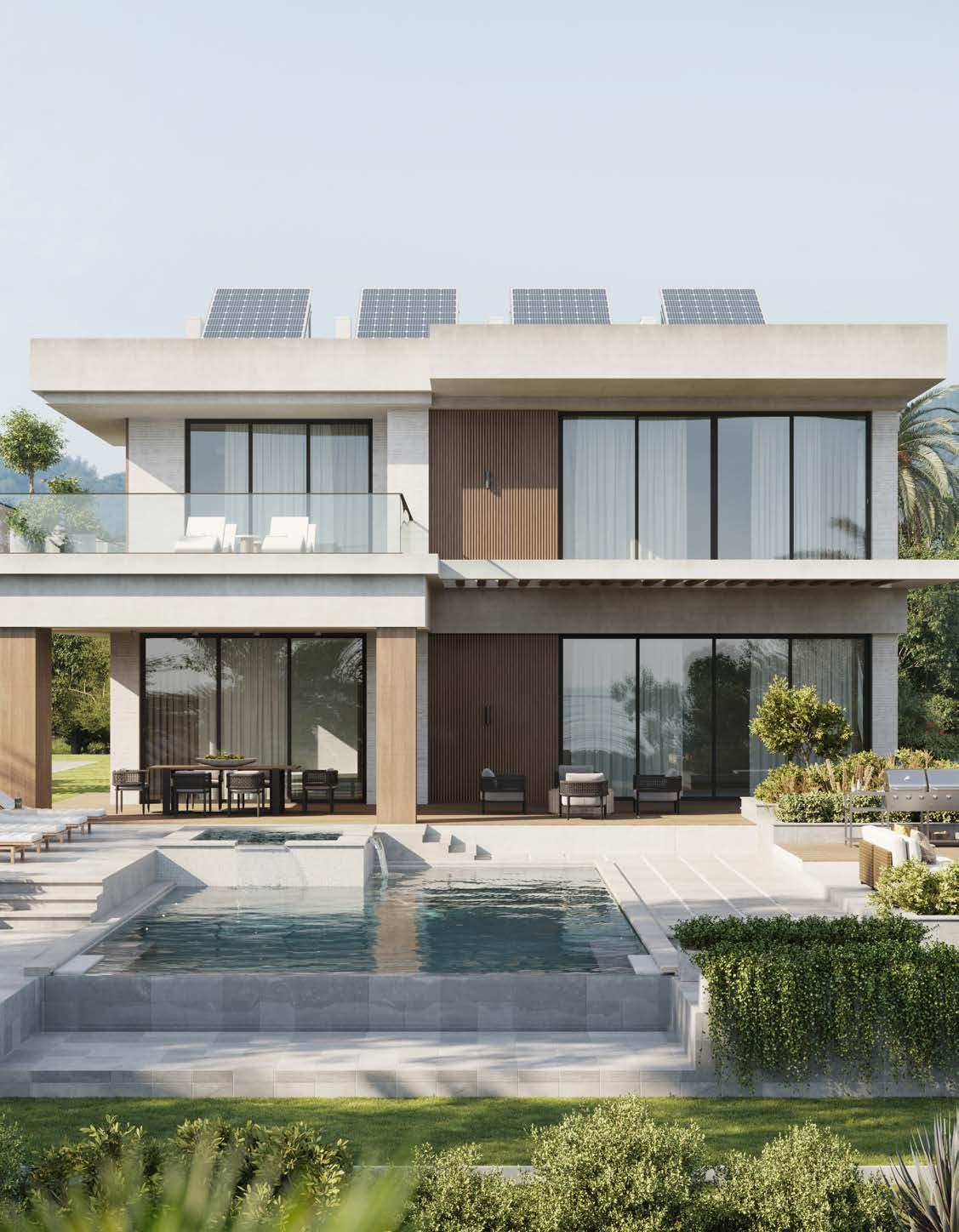
RESOURCES
CHAPTER 3: REVIEW OF 2022 | PAGES 6-17
1. https://winthropwealth.com/commentary/q22022-market-recap-and-outlook/#:~:text=invest%20new%20money%3F-,The%20S%26P%20500%20 decreased%20by%20%2D16.1%25%20in%20the%20second%20quarter,quarterly%20decline%20since%20Q1%202020.
CHAPTER 4: U.S. LUXURY OUTLOOK 2023 | PAGES 18-47
1. https://knowledge.wharton.upenn.edu/podcast/knowledge-at-wharton-podcast/less-is-more-redefining-the-luxury-goods-market/
2. https://www.cnbc.com/2022/05/25/how-to-prioritize-your-financial-goals-with-adult-kids-living-at-home.html
3. https://www.reuters.com/markets/us/futures-slip-last-trading-day-torrid-year-2022-12-30/#:~:text=by%20mid%2D2023.-,The%20Dow%20Jones%20 Industrial%20Average%20(.,or%200.11%25%2C%20to%2010%2C466.48.
4. https://money.com/vacation-house-starter-home-trend/
5. https://www.blackknightinc.com/wp-content/uploads/2022/10/BKI_DR_OMM_Sept2022_Report.pdf?utm_source=pr-team-outreach&utm_ medium=press&utm_campaign=Corp_Combo_Combo_PR-Team-Outreach&utm_term=link&utm_content=webpage
6. https://www.freddiemac.com/pmms,%20https:/www.realtor.com/news/trends/2023-the-year-of-the-homebuyer-our-bold-predictions-on-home-pricesmortgage-rates-and-more/
7. https://www.nar.realtor/magazine/real-estate-news/2023-real-estate-forecast-market-to-regain-normalcy
8. https://www.nar.realtor/sites/default/files/documents/2021-profile-of-home-staging-report-04-06-2021.pdf.
9. https://www.realtor.com/research/2023-national-housing-forecast/
CHAPTER 5: OPPORTUNITY INDEX | PAGES 48-55
1. https://www.rismedia.com/2023/01/23/great-housing-market-correction-2023/
2. https://www.businessinsider.com/the-10-best-least-bubbly-cities-for-homebuyers-in-2023-2023-1?r=US&IR=T#1-st-louis-missouri-1
3. https://www.wric.com/news/virginia-news/list-richmond-virginia-beach-named-on-25-best-places-to-live-on-the-east-coast-in-2022-2023/
4. https://www.globest.com/2023/01/27/bidding-wars-are-back-in-key-home-markets/?slreturn=20230107201741
5. https://www.summitdaily.com/news/summit-county-home-sales-decrease/
CHAPTER 6: NEW NARRATIVES FOR 2023 | PAGES 56-7
1. https://knowledge.wharton.upenn.edu/article/how-this-psychological-effect-skews-home-prices/
2. https://info.altrata.com/wx-wuwr-2022-download
3. https://www.forbes.com/sites/henley--partners/2022/10/18/the-emergence-of-a-new-class-of-super-rich-the-centi-millionaire/?sh=2da174d76e75
4. https://www.barrons.com/articles/u-s-boasts-38-of-the-worlds-centi-millionaires-01674679280
5. https://www.nar.realtor/research-and-statistics
6. https://www.cnbc.com/2023/02/03/jobs-report-january-2023-.html
7. https://themortgagereports.com/61853/30-year-mortgage-rates-chart
8. https://www.marketplace.org/2023/02/02/have-homebuyers-adapted-to-higher-mortgage-rates/
9. https://www.realtor.com/advice/buy/the-massive-mistake-homebuyers-may-be-tempted-to-make-right-now-is-this-you-too/
CHAPTER 7: GLOBAL LUXURY OUTLOOK 2023 |PAGES 78-103
1. https://www.credit-suisse.com/media/assets/corporate/docs/about-us/research/publications/global-wealth-report-2022-en.pdf
2. https://www.worldbank.org/en/news/press-release/2023/01/10/global-economic-prospects
3. https://www.credit-suisse.com/about-us/en/reports-research/global-wealth-report.html
4. https://www.privatebank.bankofamerica.com/articles/wealth-study-2022.html
5. https://www.nar.realtor/sites/default/files/documents/2022-international-transactions-in-us-residential-real-estate-07-18-2022.pdf
6. https://www.weforum.org/agenda/2021/04/global-percentage-rent-own-global-property
7. https://www.brookings.edu/essay/germany-rental-housing-markets/
8. https://www.forbes.com/sites/jonathanburgos/2022/10/31/singapore-housing-market-defies-global-downturn-and-curbs-amid-soaringrents/?sh=622327c91869
9. https://www.theguardian.com/money/2023/feb/01/uk-house-prices-fall-for-fifth-month-in-a-row
10. https://wowa.ca/toronto-housing-market#:~:text=The%20average%20home%20sold%20price,%2Dyear%20to%20%241.38M.
11. https://asia.nikkei.com/Business/Energy/Japan-s-TEPCO-applies-to-raise-home-power-prices-by-nearly-30
12. https://www.businessinsider.com/wealthy-americans-buy-second-passports-amid-covid-politics-climate-change-2022-5
13. https://kpmg.com/ca/en/home/insights/2022/10/ontario-increases-foreign-home-buyers-tax.html
14. https://www.credit-suisse.com/about-us/en/reports-research/global-wealth-report.html
15. https://www.forbes.com/sites/jonathanburgos/2022/11/09/wealthy-chinese-lead-home-purchases-in-singapore-sending-pricessoaring/?sh=2bdf02988bee
16. https://www.bloomberg.com/news/articles/2023-01-12/hong-kong-sees-record-mortgage-applications-from-chinese-buyers
17. https://www.internationalprivatefinance.com/france-best-buy-tables
18. https://www.pwc.ch/en/publications/2022/Taking_up_residence_in_Switzerland_EN.pdf
19. https://www.bbc.com/news/technology-63488059
20. https://market.decentraland.org/lands
21. https://www.bloomberg.com/news/articles/2022-01-19/microsoft-msft-activision-blizzard-atvi-deal-shows-big-tech-metaverse-push
22. https://news.samsung.com/us/creation-of-samsung-837x/
23. https://coinmarketcap.com/currencies/metaverse-index/
24. https://www.vantagemarketresearch.com/industry-report/metaverse-in-real-estate-market-1516
The Opportunity Index evaluates, scores, and then ranks 125 U.S. markets based on their buyer or seller opportunity. It does this by assessing the Sales Ratio* and the median sale-price-to-list-price ratio (SP/LP%) for the data during the last four months of the year and then the inventory growth percentage as compared to the first eight months of 2022.
TOP 20 SELLER OPPORTUNITY MARKETS IN THE U.S.*
*Data based on last four months of 2022. Sales Ratio represents market speed and market status: Buyer’s = less than 15%; Balanced = 15% to less than 21%; Seller’s = 21% or greater. Source: Institute for Luxury Home Marketing
TOP 20 BUYER OPPORTUNITY MARKETS IN THE U.S.*
*Data based on last four months of 2022. Sales Ratio represents market speed and market status: Buyer’s = less than 15%; Balanced = 15% to less than 21%; Seller’s = 21% or greater. Source: Institute for Luxury Home Marketing
Data is based on last four months of 2022
*Sales Ratio: a comparison of the number of sold properties against remaining inventory each month to establish the level of demand and determine the market status: Buyer’s = less than 15%, Balanced = 15% to less than 21%, and Seller’s = 21% or greater. Source: The Institute for Luxury Home Marketing
Methodology
For The Report 2023 the Institute for Luxury Home Marketing analyzed the data for the top 10% for up to 125 U.S. markets. Top 10% is defined as homes with sold prices (or in terms of inventory, list prices), matching or exceeding the 90th percentile sold price for homes sold in 2019, 2020, 2021, and 2022 in the specified city. Once these percentiles are determined, these become the thresholds for measuring each month’s data.
Data is calculated monthly from various sources to attain the most accurate set of information pertaining to parameters, as seen throughout this report, such as closed sales, active listings, sold prices, sold-price-to-list-price percentages, days on market, and sales ratios. Data is then represented both monthly and yearly throughout the report, using medians, averages, totals, percentages, and ratios. However, unless otherwise specified, statistics typically presented in this report represent both the monthly median and the median of monthly medians of the respective data.
The median was calculated by arranging the data in sequential order and selecting the middle number of the set, whether that number be a price, volume, number, percentage, or ratio. To determine the median of the monthly median, monthly medians are totaled, and the same method applied as for the monthly figure. Unless otherwise specified, all statistics are based on property sold. Inventory statistics are based on property available at the end of each month. Average Monthly Inventory and Average Monthly Sold statistics are based on the average of monthly property totals for each month. Sales Ratio is based on the ratio of Average Monthly Sold to Average Monthly Inventory.
Market Status is an analysis of Sales Ratio and represents market speed and market type: Buyer’s = less than 15%; Balanced = 15% to less than 21%; Seller’s = 21% or greater. If greater than 100%, MLS data reported previous month’s sales exceeded remaining inventory pulled at the end of the month.
DATA FROM WEALTH-X
To provide data on the affluent with a net worth of $5 million+, Wealth-X, an Altrata company, uses their proprietary and recently updated Wealth and Investable Assets Model. This model produces statistically significant estimates for total private wealth and estimates the size of the population by level of wealth and investable assets for the world and each of the top 70 economies, which account for 98% of world GDP.
Wealth-X estimates total private wealth by using econometric techniques that incorporate a large number of national variables, such as stock market values, GDP, tax rates, income levels, and savings from sources such as the World Bank, International Monetary Fund, Organization for Economic Cooperation and Development, and national statistics authorities. Second, they estimate wealth distribution across each country’s population.
Wealth-X’s proprietary database of millions of records on the world’s wealthiest individuals enables them to construct wealth distribution patterns using real, rather than assumed, making the model more reliable. They then use the resulting Lorenz curves to distribute the net wealth of a country across its population.
Their model also estimates population, wealth, and investable assets for the world’s 200 major cities as ranked by nominal GDP in $. These cities are defined on the basis of urban agglomerations (UAs) and metropolitan (metro) areas, which include the built-up areas outside the administrative core, for example, New York includes New York City, Newark, and Jersey City. They focus on metro areas to ensure comparability because globally comparable city-level data is not available. They find that metro and urban areas are closer to self-contained entities compared with city administrative cores (city proper) because more residents are likely to work and spend within the metro/UA boundaries. They focus on metro areas to ensure comparability because globally comparable city-level data is not available.
DATA FROM COLDWELL BANKER GLOBAL LUXURY’S 2023 INTERNATIONAL SURVEY
Research conducted by Censuswide of 1,202 people with a household income of $1 million+ considering purchasing a luxury home. For the full methodology: blog.coldwellbanker. com/cbgl-2023-international-survey.
Disclaimers
©2023 Coldwell Banker Real Estate LLC. All rights reserved. Coldwell Banker ®, the Coldwell Banker Logo, Coldwell Banker Global Luxury ®, and the Coldwell Banker Global Luxury Logo are registered service marks owned by Coldwell Banker Real Estate LLC in the United States and by Coldwell Banker LLC outside the United States. Coldwell Banker Real Estate LLC fully supports the principles of the Fair Housing Act and the Equal Opportunity Act. Each franchise is independently owned and operated.
The statistical information showcased through The Report for Coldwell Banker Global Luxury ® has been compiled from various sources, including but not limited to Coldwell Banker’s Independent Sales Associates, Brokers, Brokerages, and Affiliates, Institute for Luxury Home Marketing, Wealth-X, an Altrata company, local MLS boards, local tax records, private and public sources, and Realtor.com. Data may not include private sales, as these transactions are not always reported through the above sources.
The Institute for Luxury Home Marketing publishes the Luxury Market Report on a monthly basis to measure market conditions for luxury real estate around the country and is prepared using statistical representation of the Median Price for each of the markets represented in its report. Information contained herein has been computed by the Institute for Luxury Home Marketing’s data research partner and shared with Coldwell Banker Global Luxury ® and based on information attained both privately and publicly.
The data for this report is based on closed and recorded sides of homes sold during 2019, 2020, 2021, and 2022. However, statistical information has been calculated using closed sales activity reported over a 48-month period from January 1, 2019, through December 31, 2022. Closed sales reported significantly later than this analysis period will not be included. All active status listing records were downloaded and processed to the same standards, at the end of each calendar month, from January 2019 through December 2022. Property-specific active and sales records were standardized, inaccurate list and sale prices were corrected when necessary, and all duplicate records were manually excluded. As a result, statistics available via the source data providers may not correlate to this analysis.
Although we believe that high standards have been used in the preparation of the information, analysis, and views presented, we take no responsibility or liability whatsoever for the contents. As not all private real estate activity is actively reported within its primary marketplaces, it is believed that not all property transfer data is included in this analysis. All the information is provided “as is,” and we make no express, implied, statutory, or other warranty of any kind or guarantee as to the accuracy, timeliness, completeness, efficacy, merchantability, and fitness for any particular purpose of any of the contents.
This data is considered to be reliable but is not guaranteed, either by the Institute for Luxury Home Marketing, its data research partner, or any participating MLS, Coldwell Banker Real Estate, LLC, Coldwell Banker Independent Sales Associates, Brokers, Brokerages, or Affiliates.
The information provided in this report is not a recommendation to buy or sell real estate, and when evaluating a particular property, it is recommended that specific comparable sales data is used in addition to this market trend information. As far as applicable laws allow, we do not accept responsibility for errors, inaccuracies, or omissions, nor for loss or damage that may result directly or indirectly from reliance on or use of its contents. Instead, it is recommended that all homeowners work directly with a licensed real estate agent or broker. Copyright ©2023. All rights reserved.











